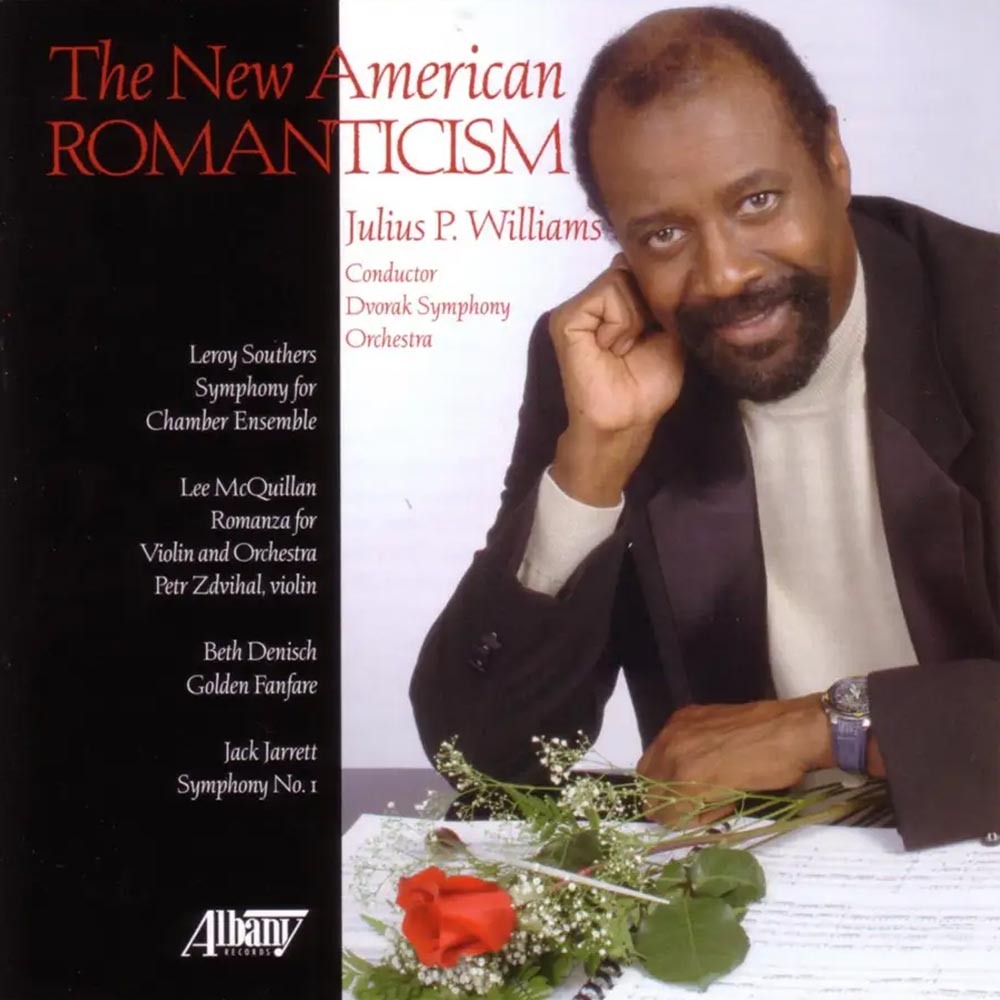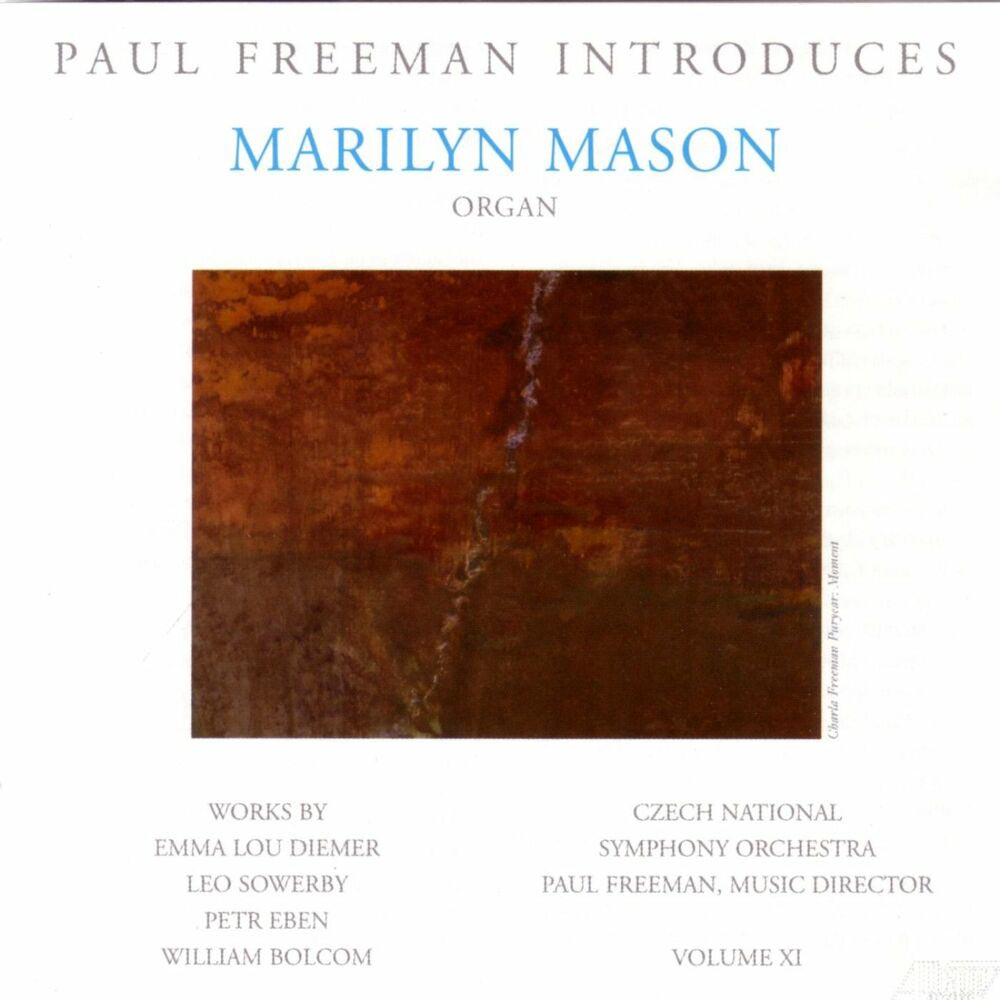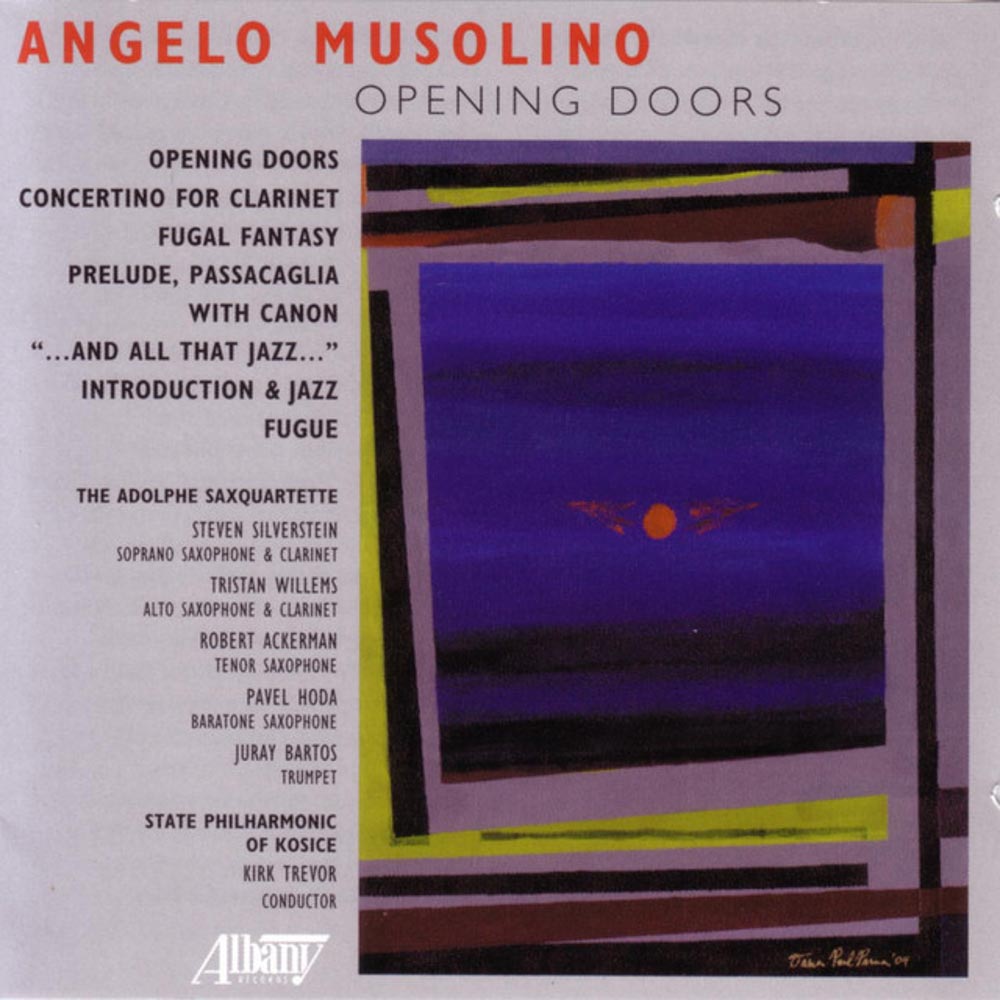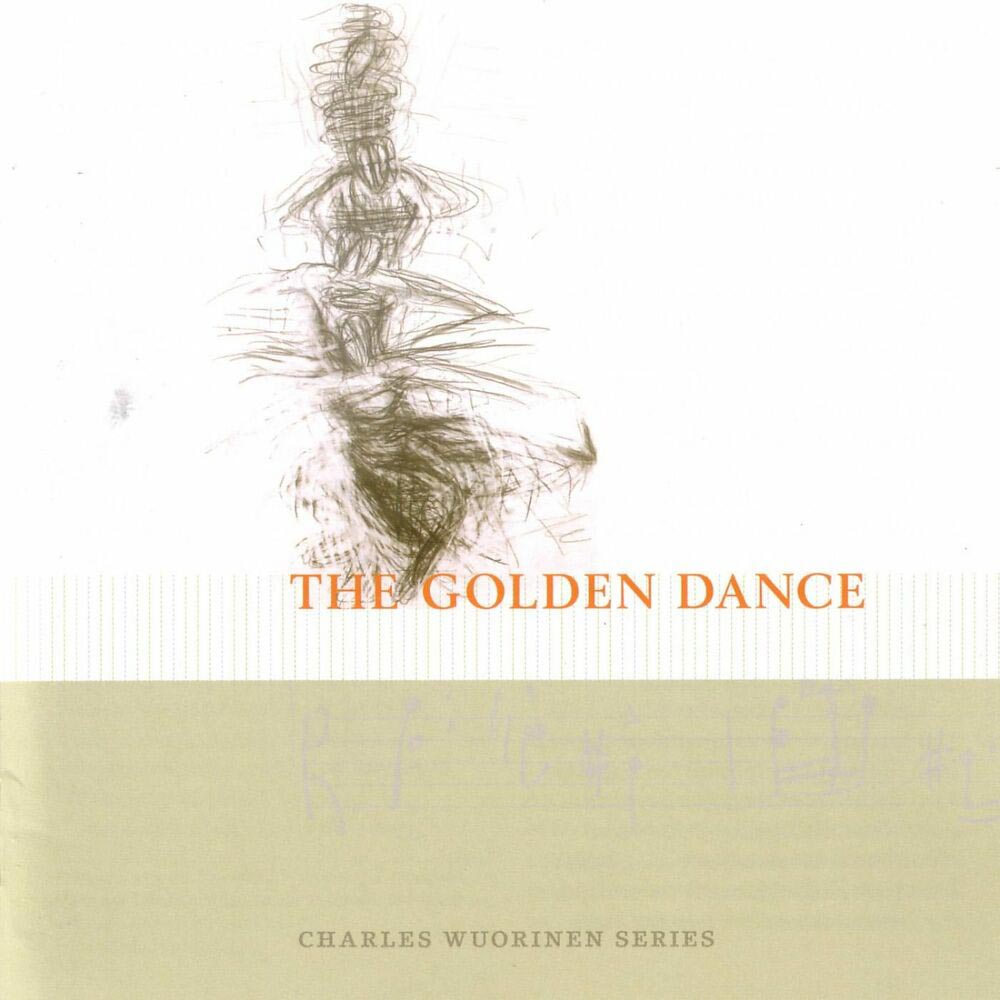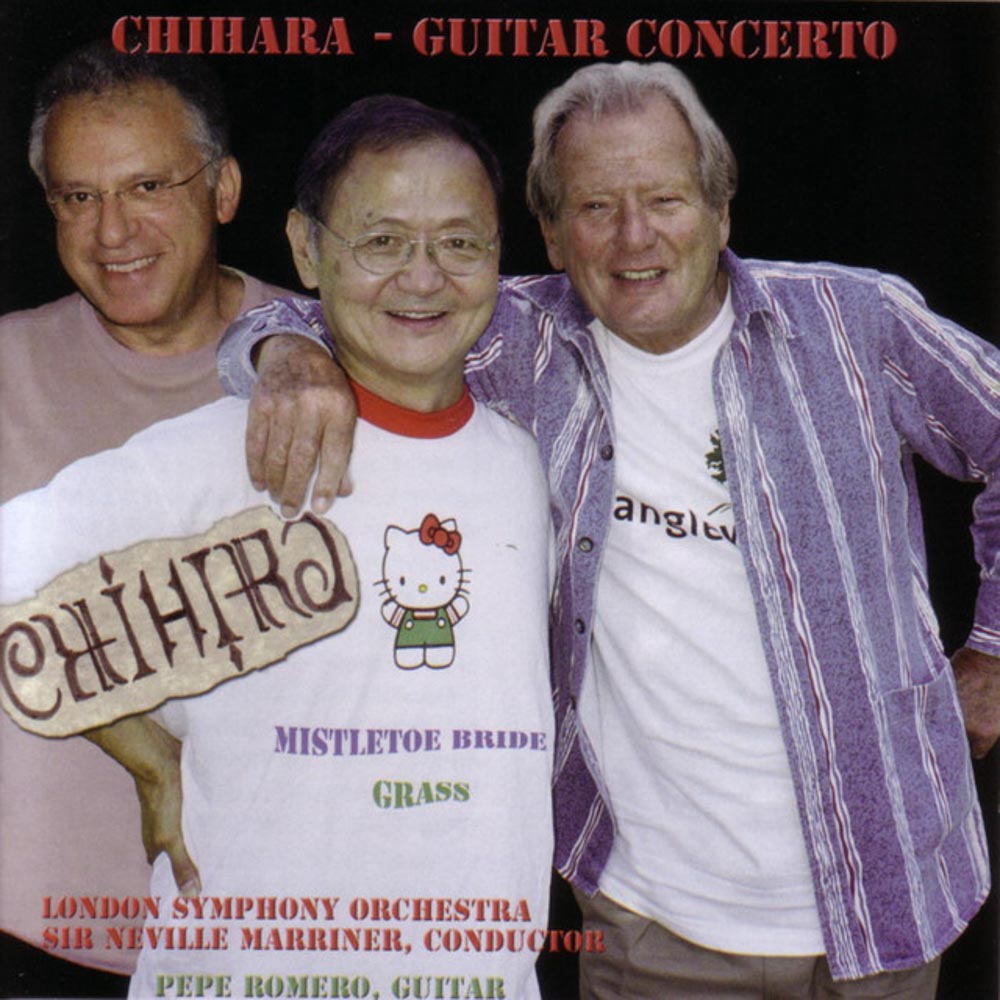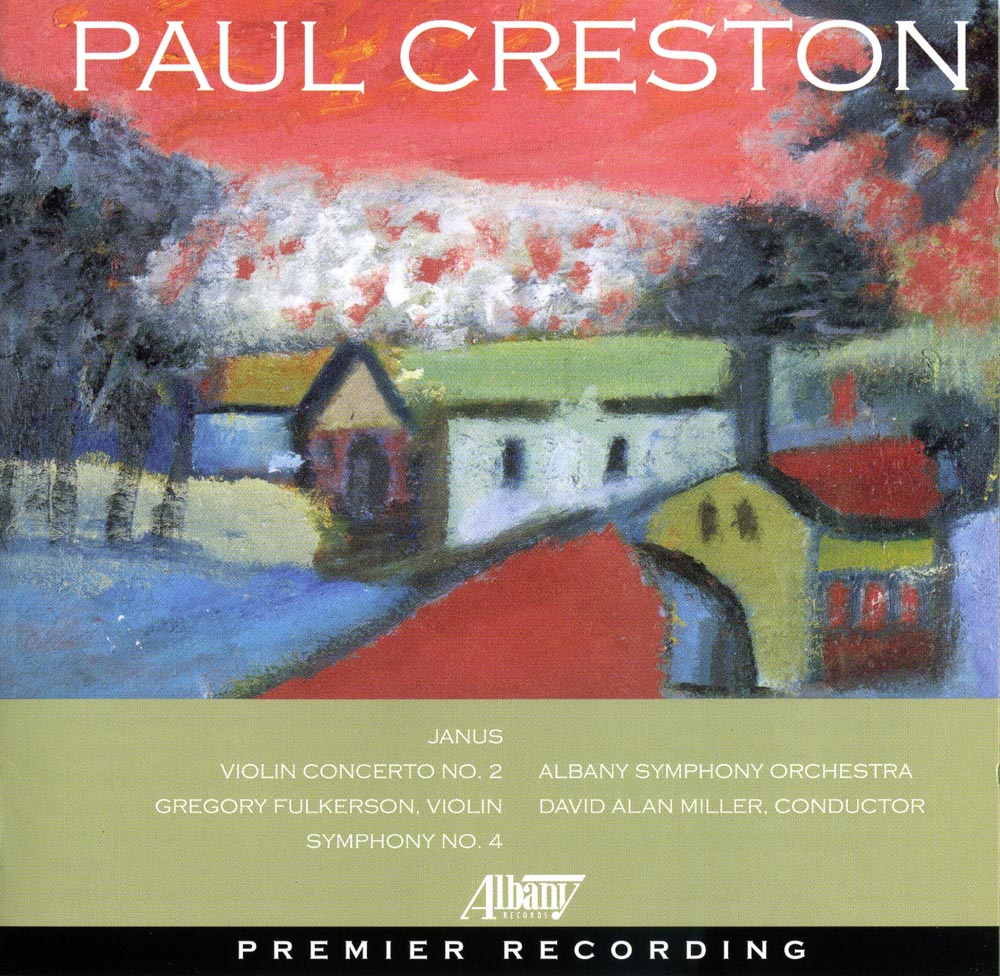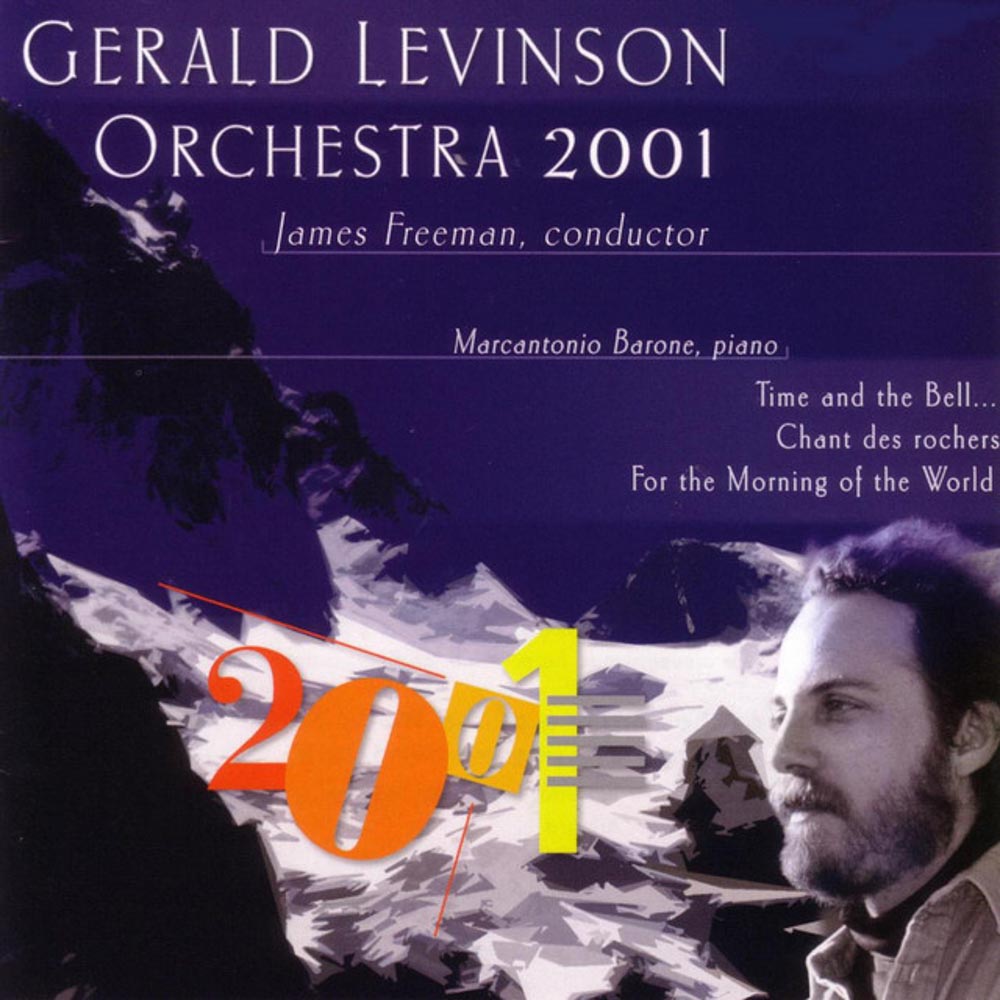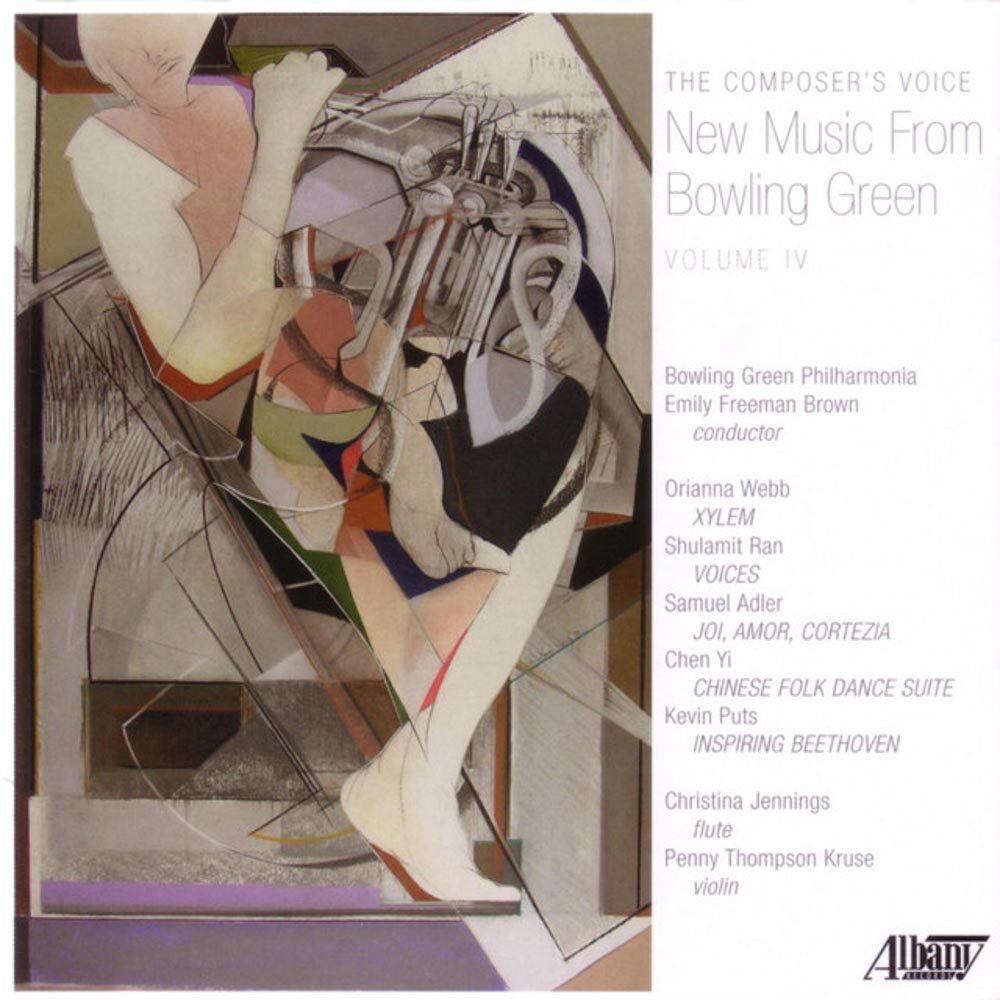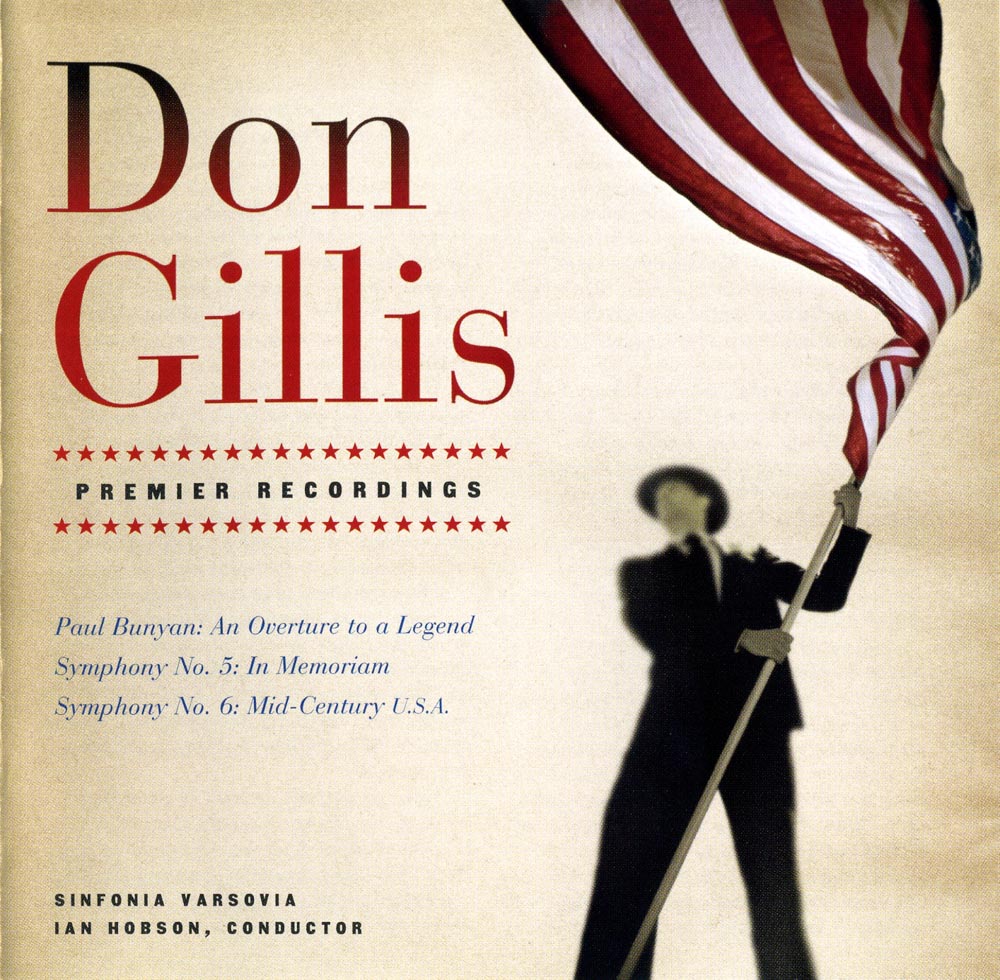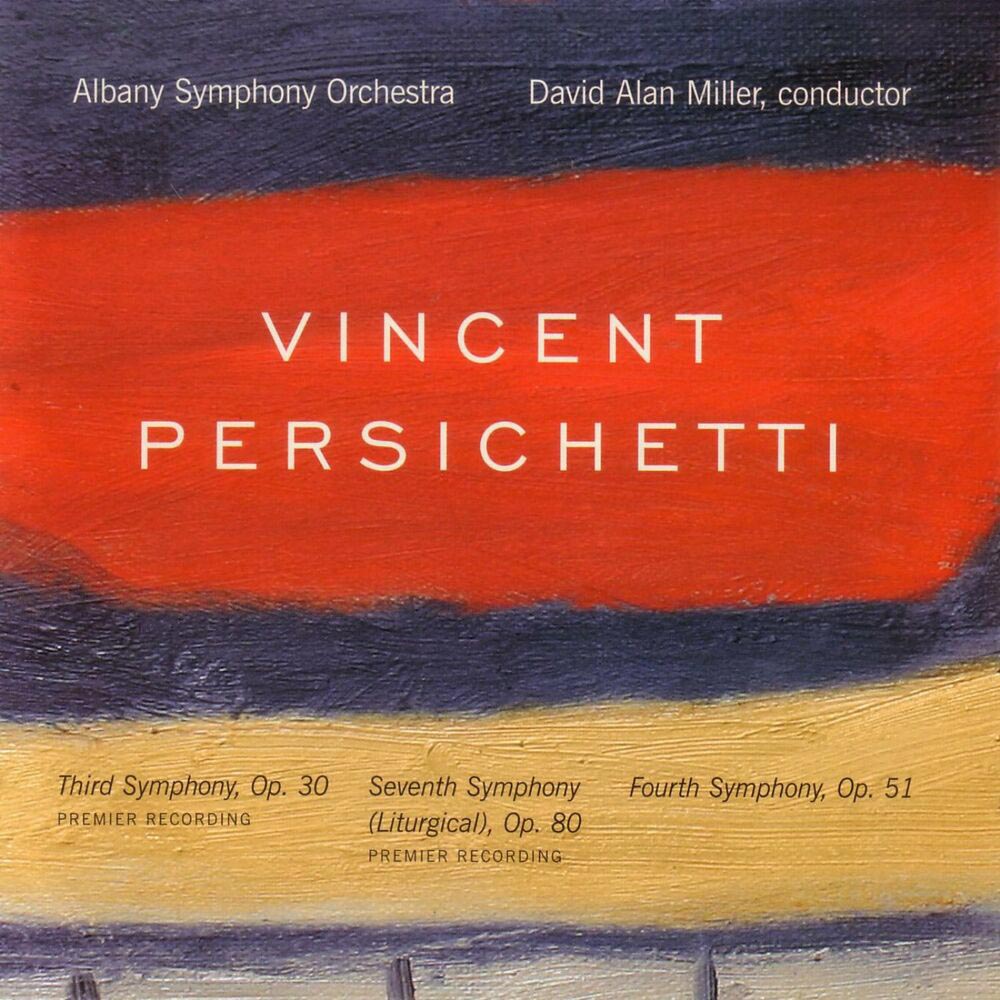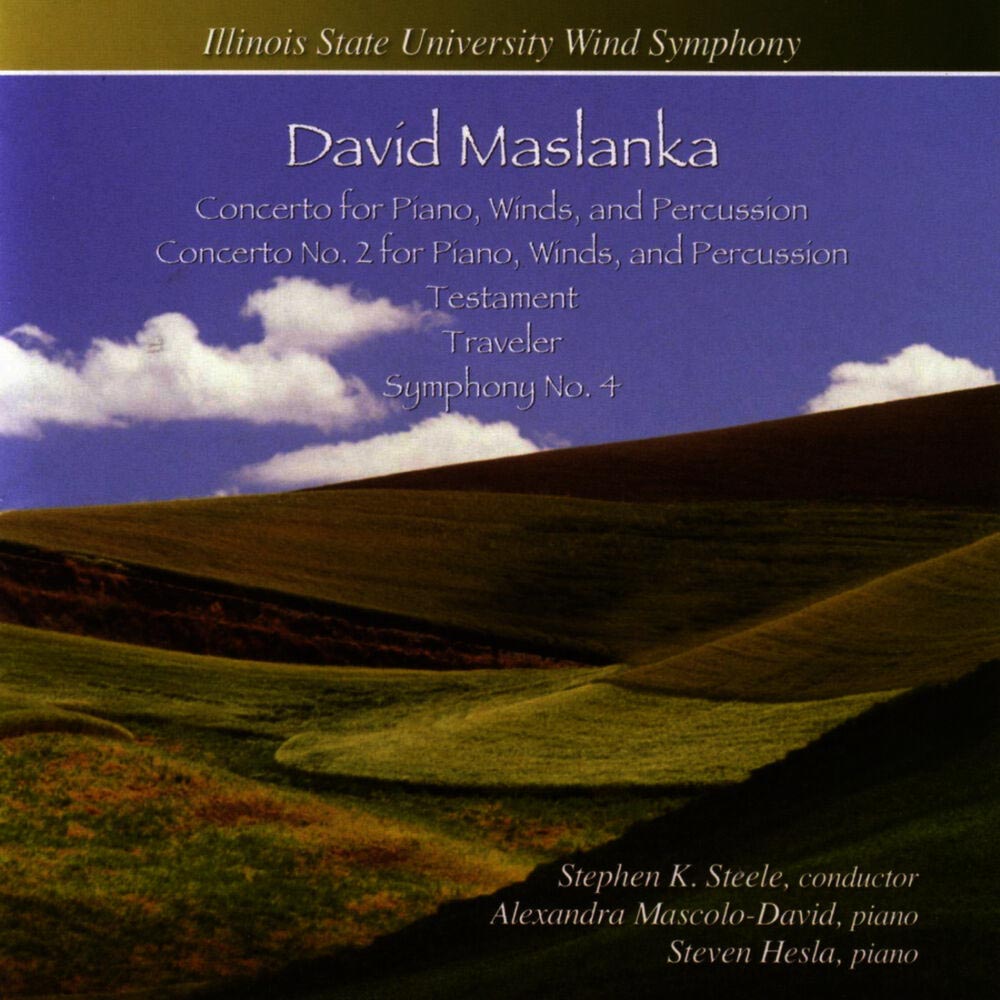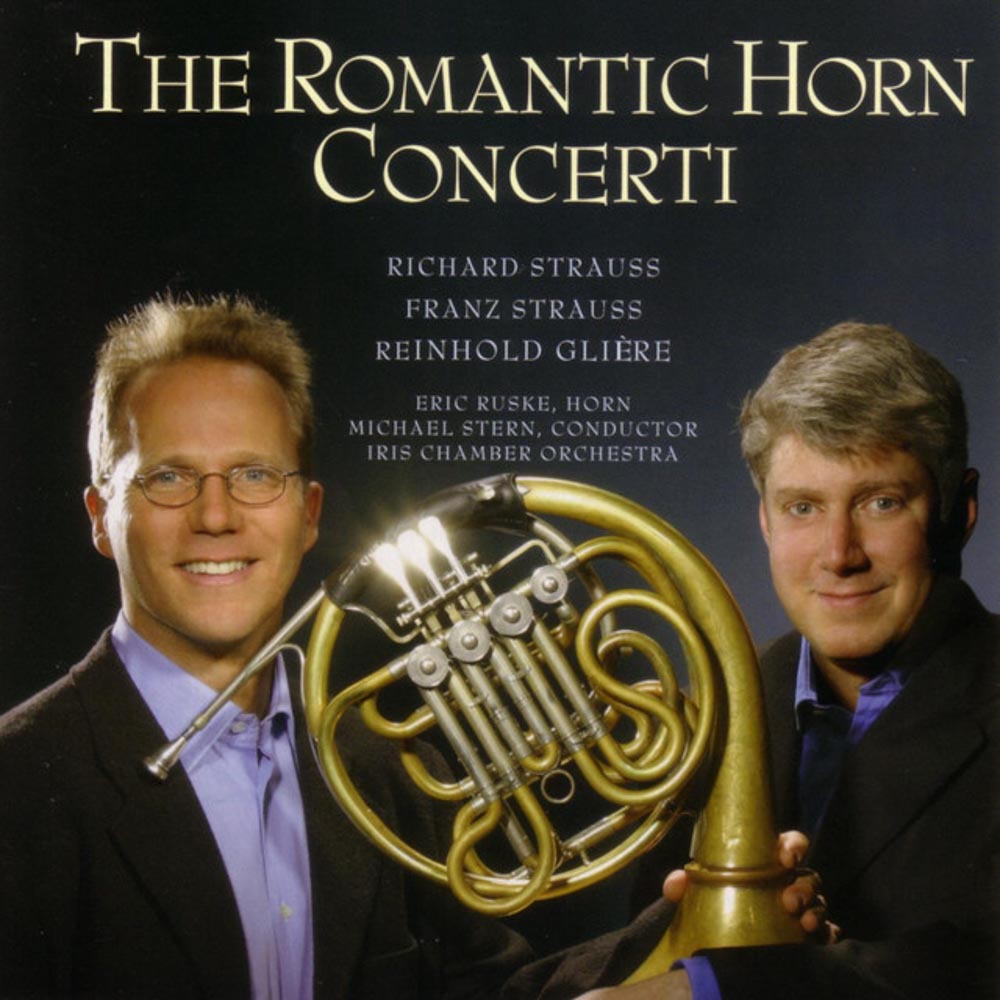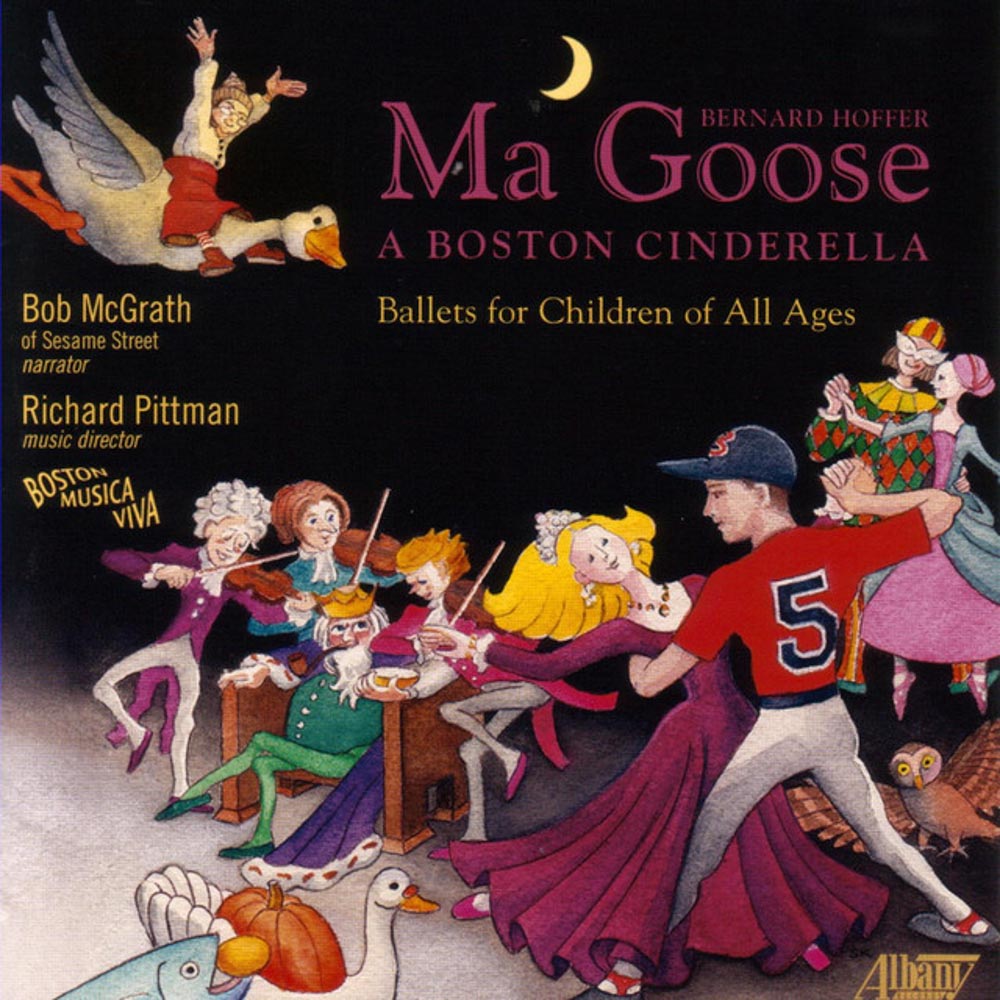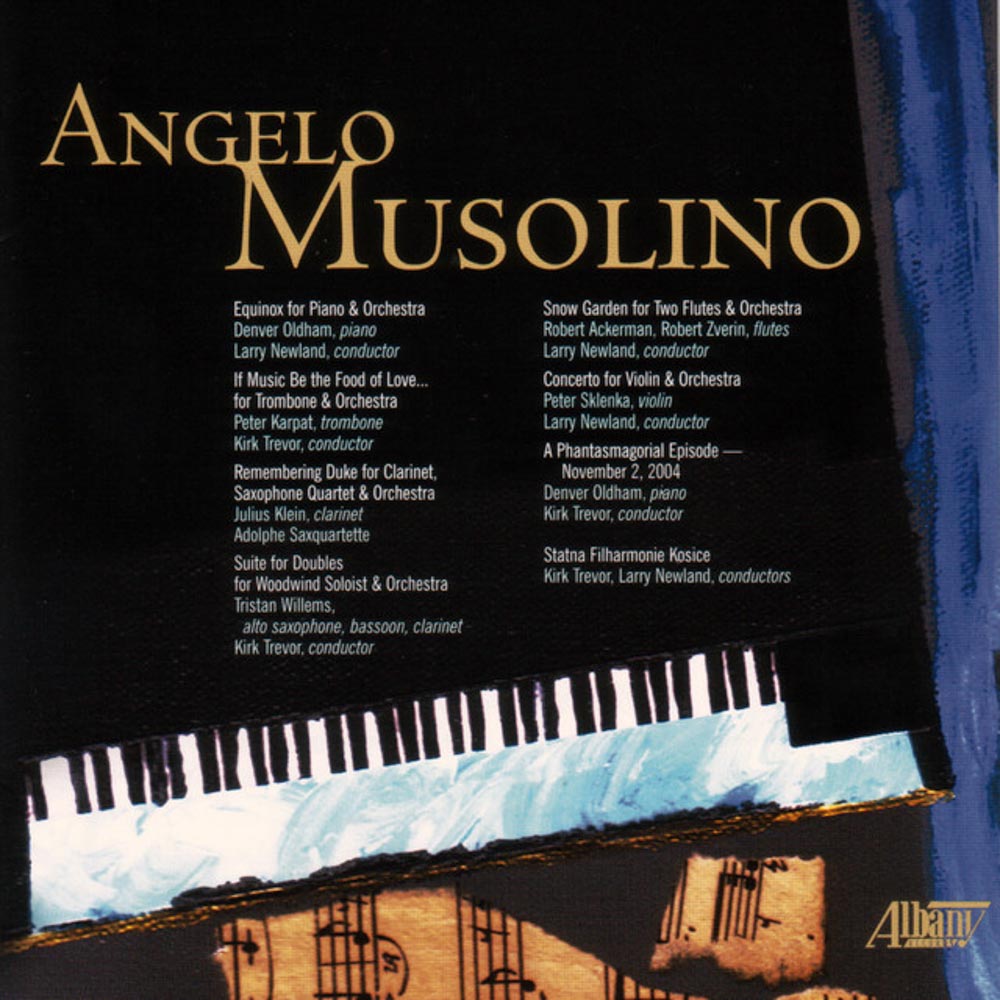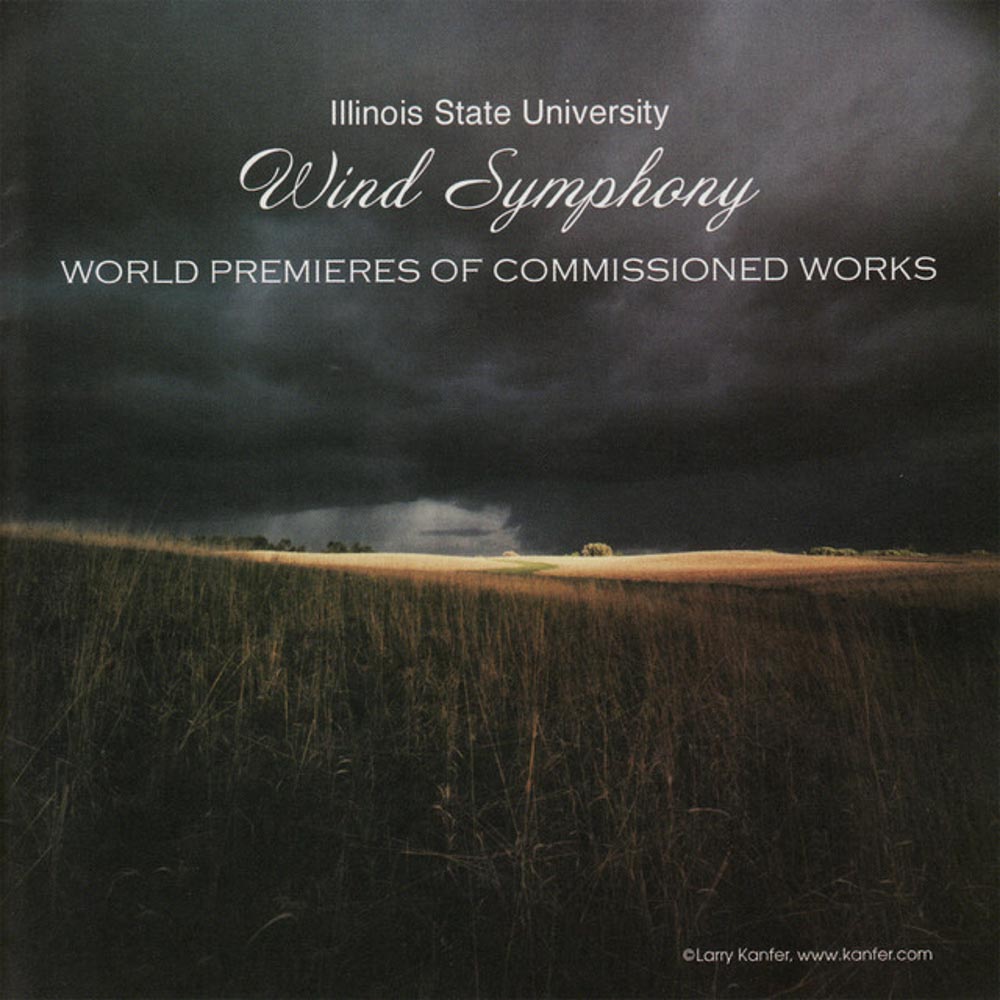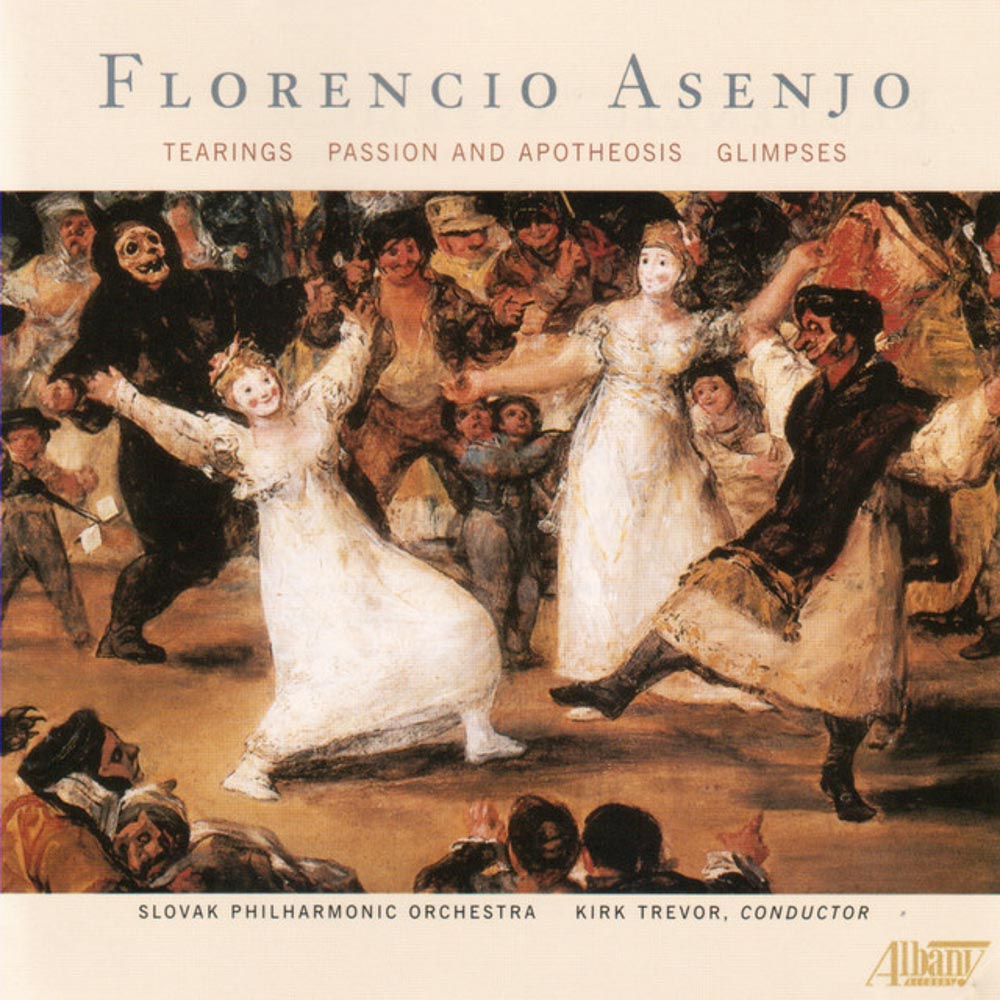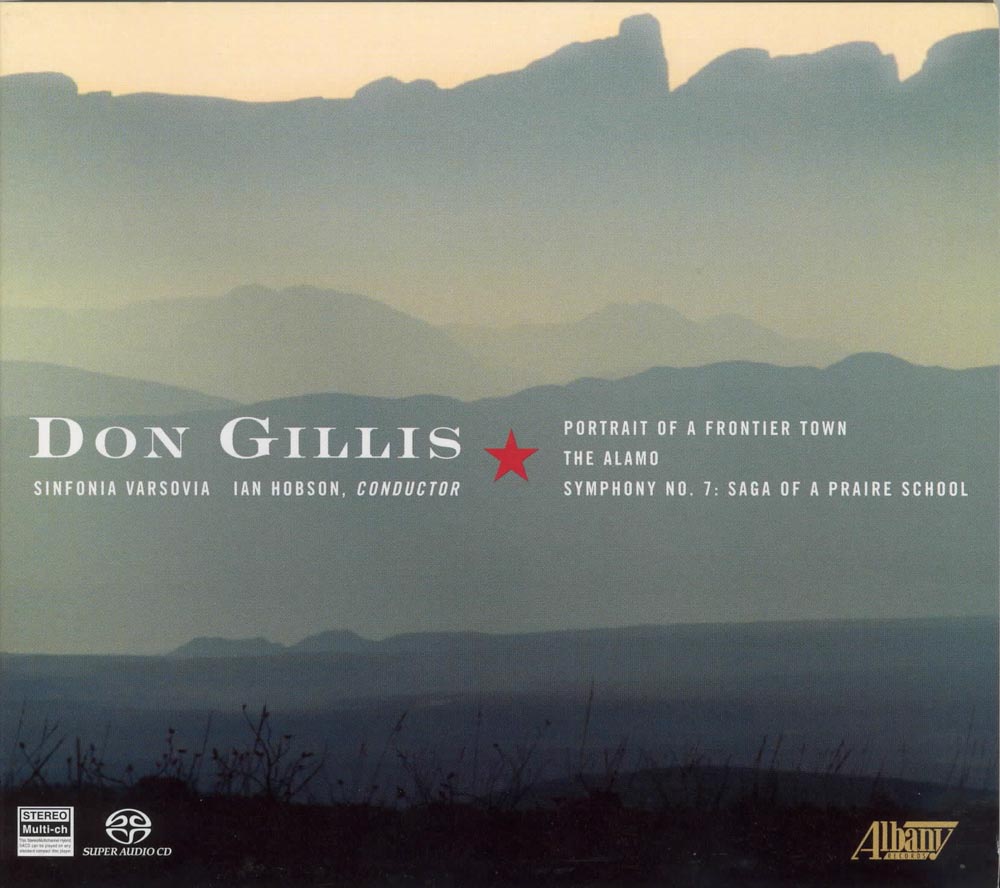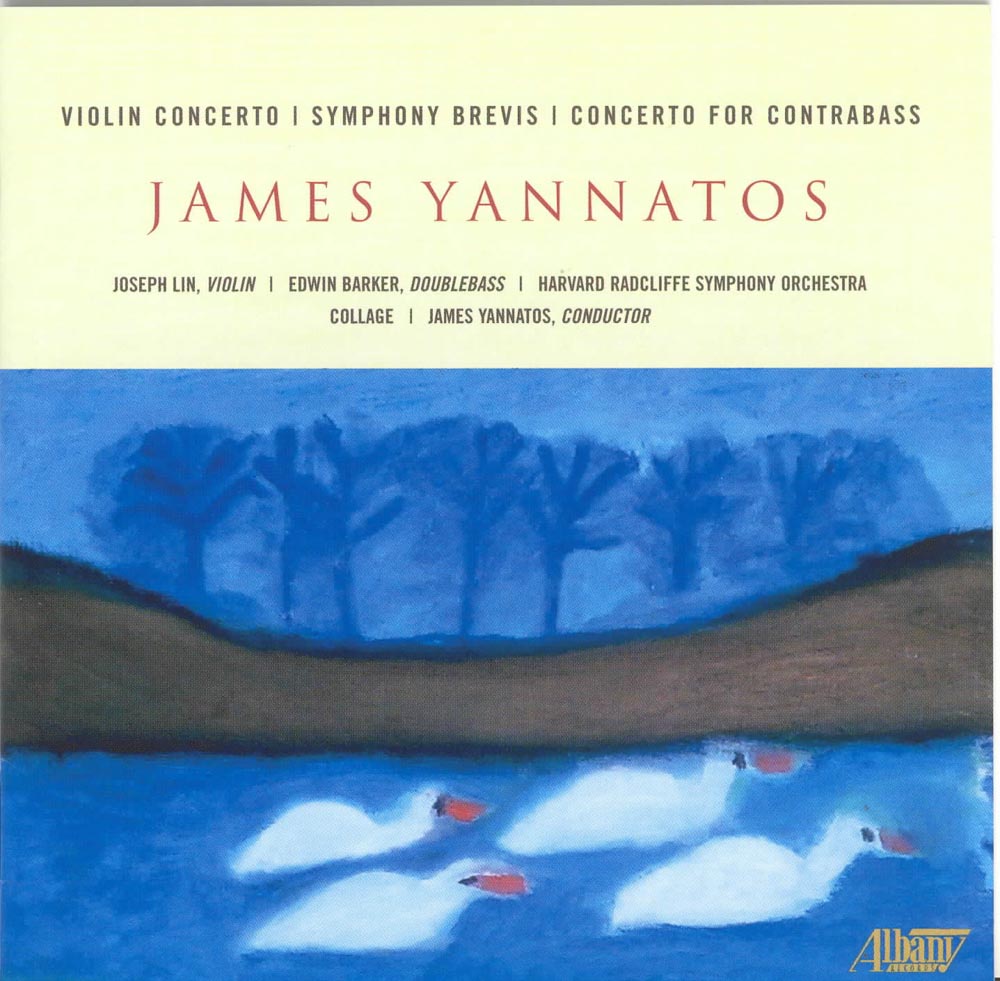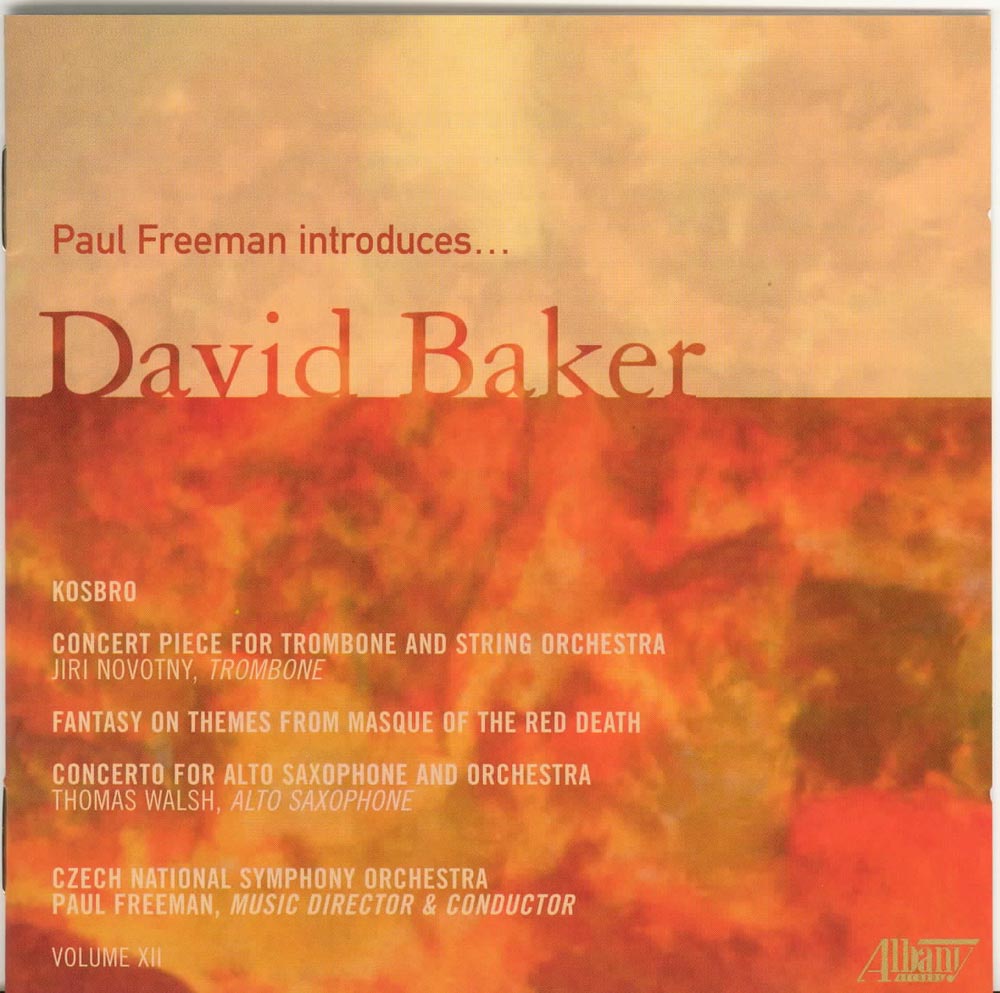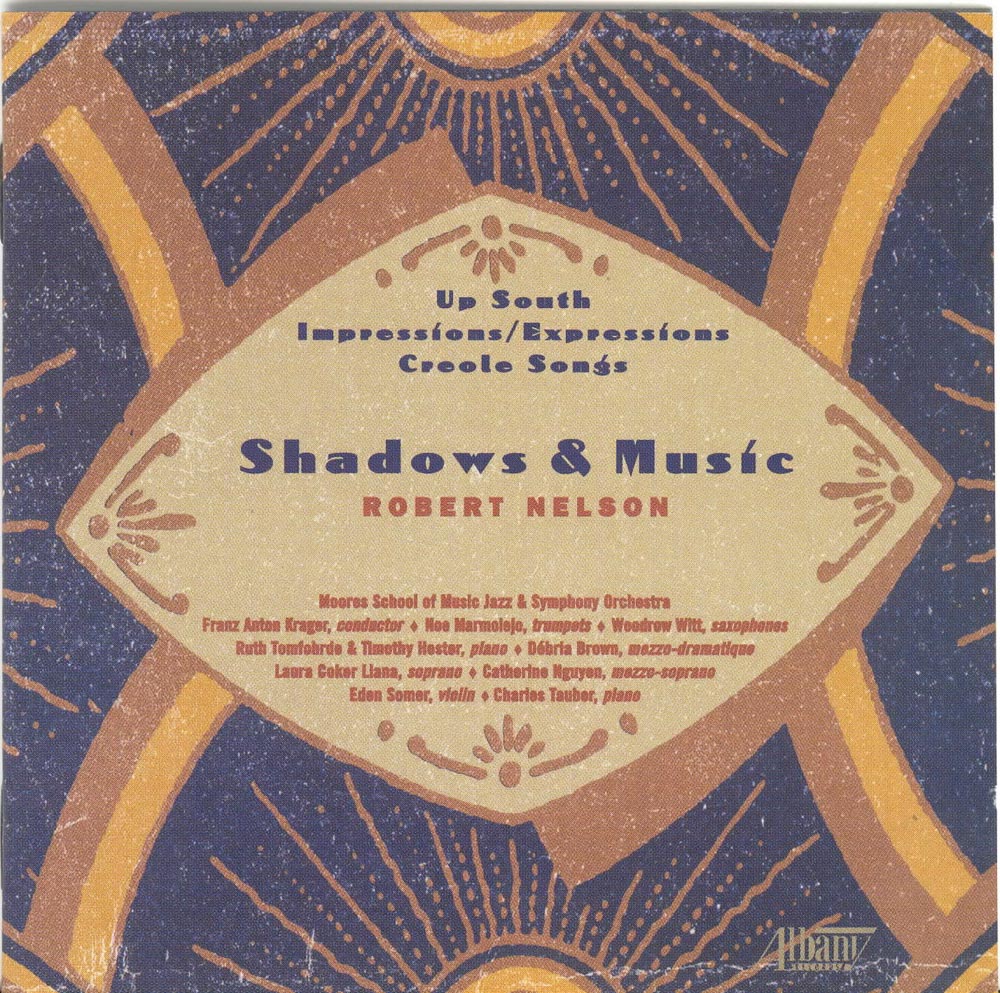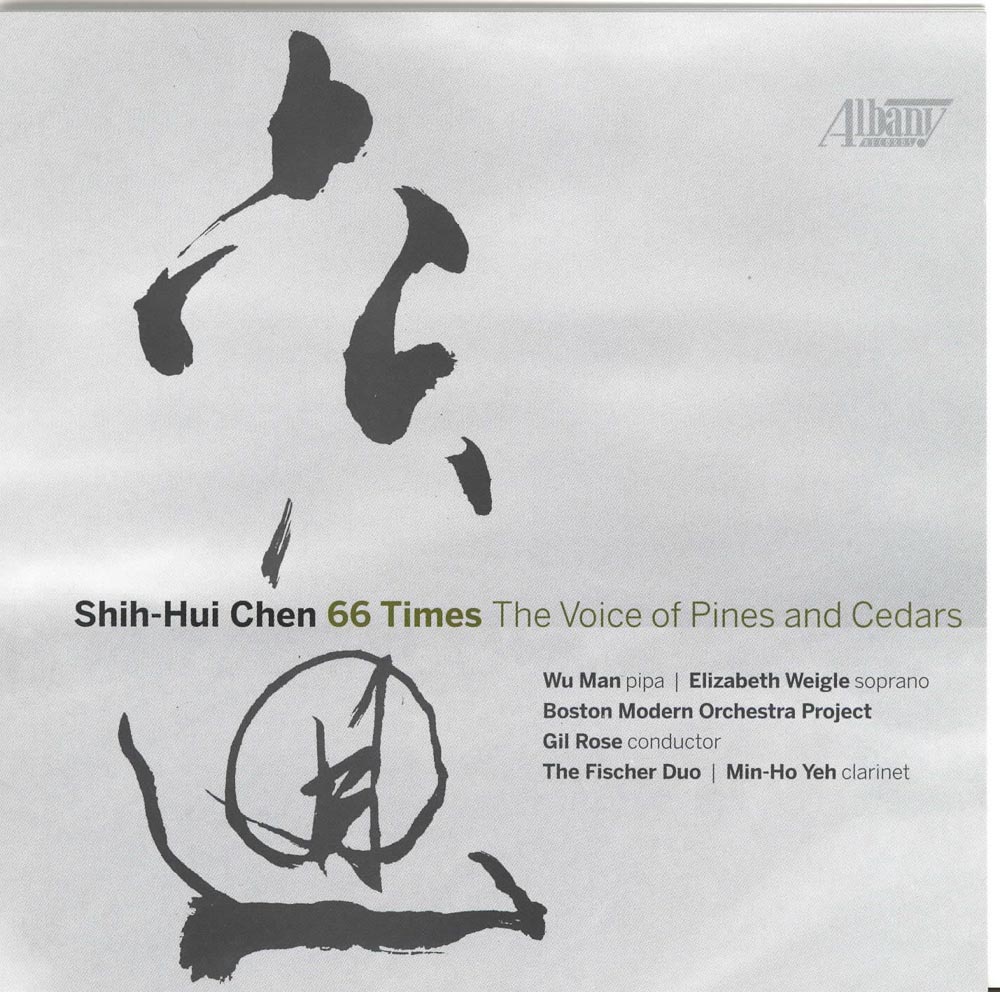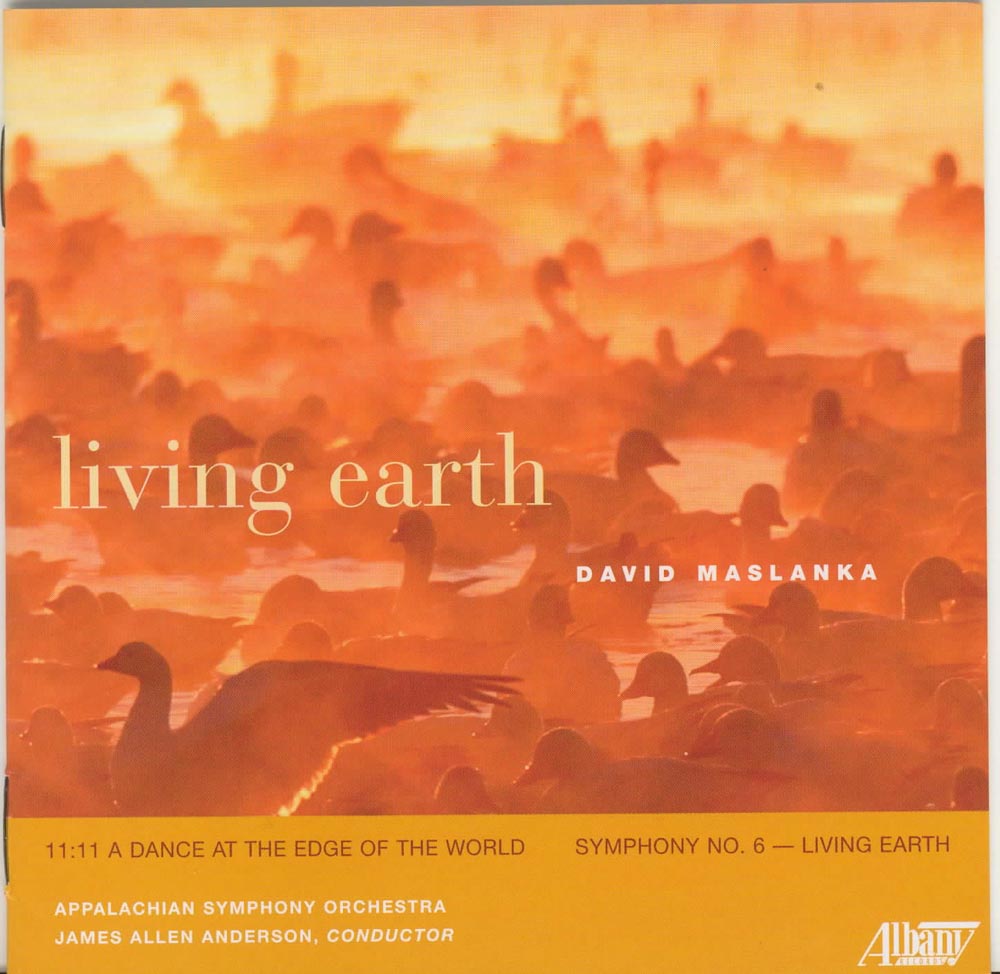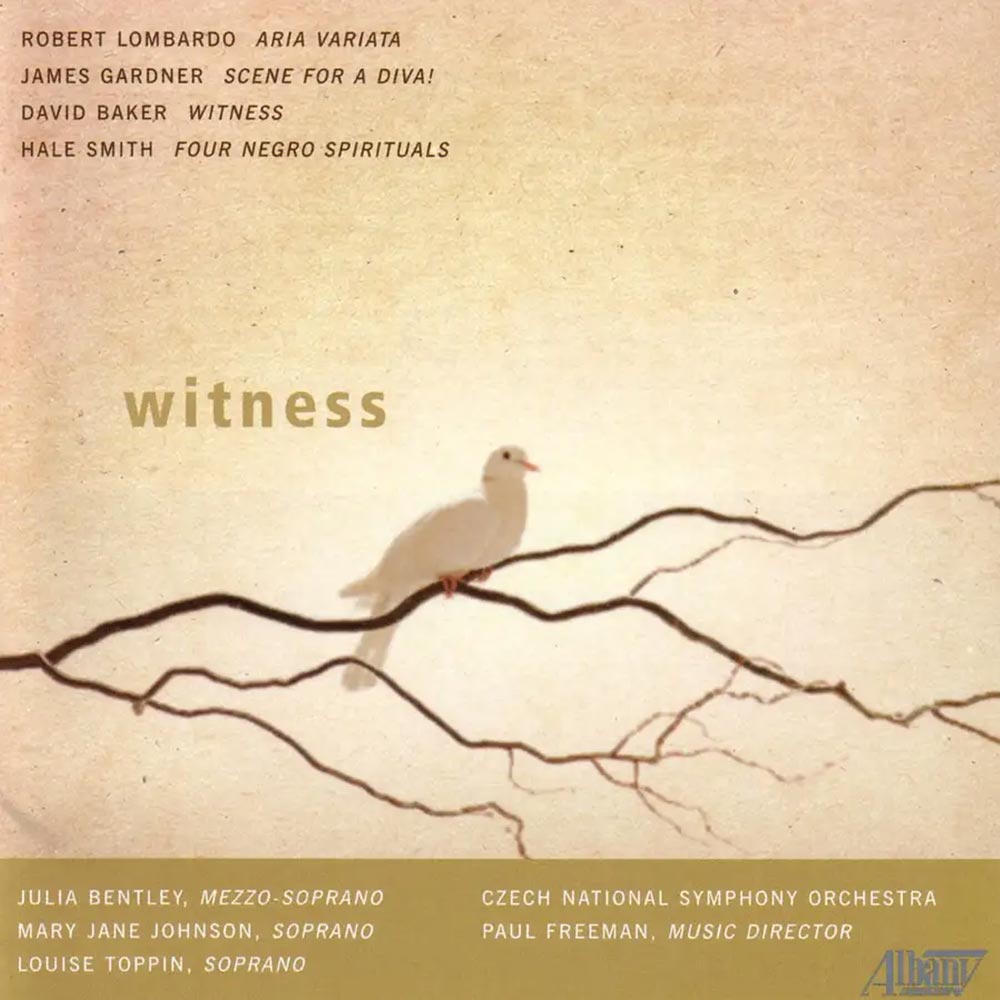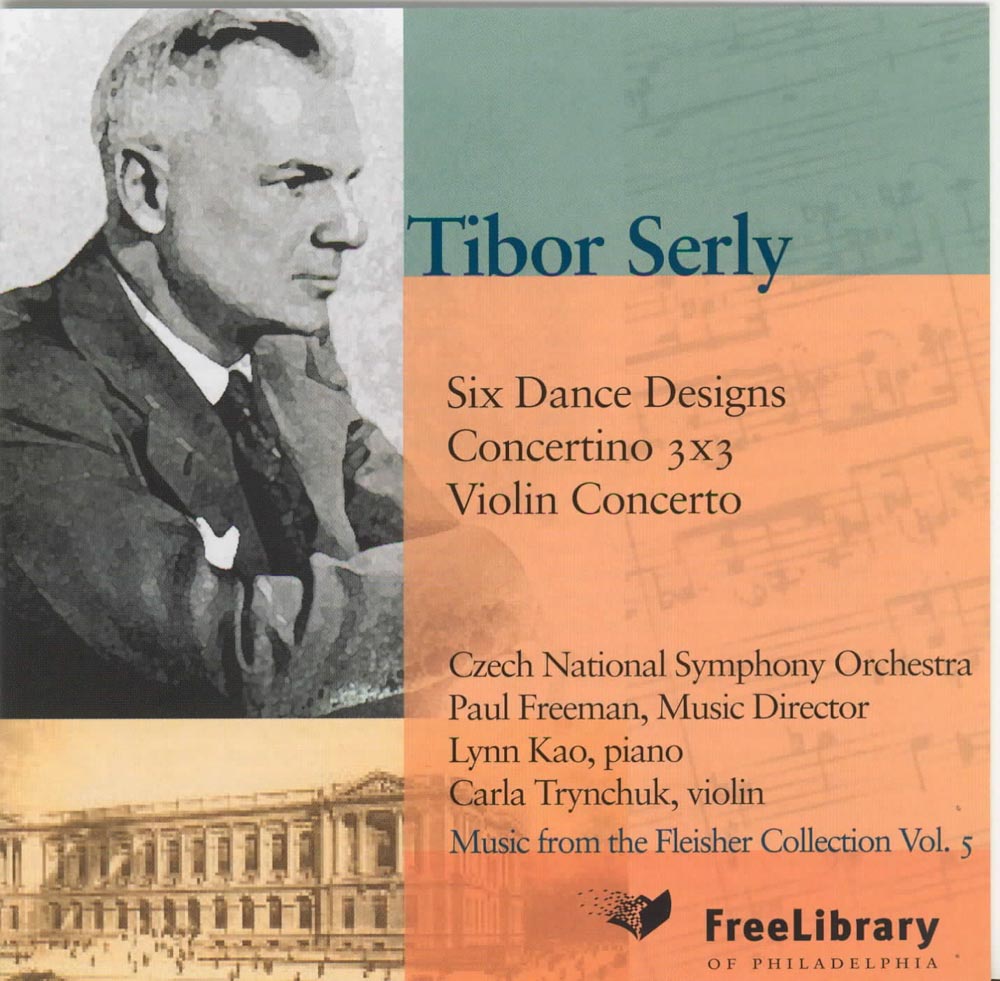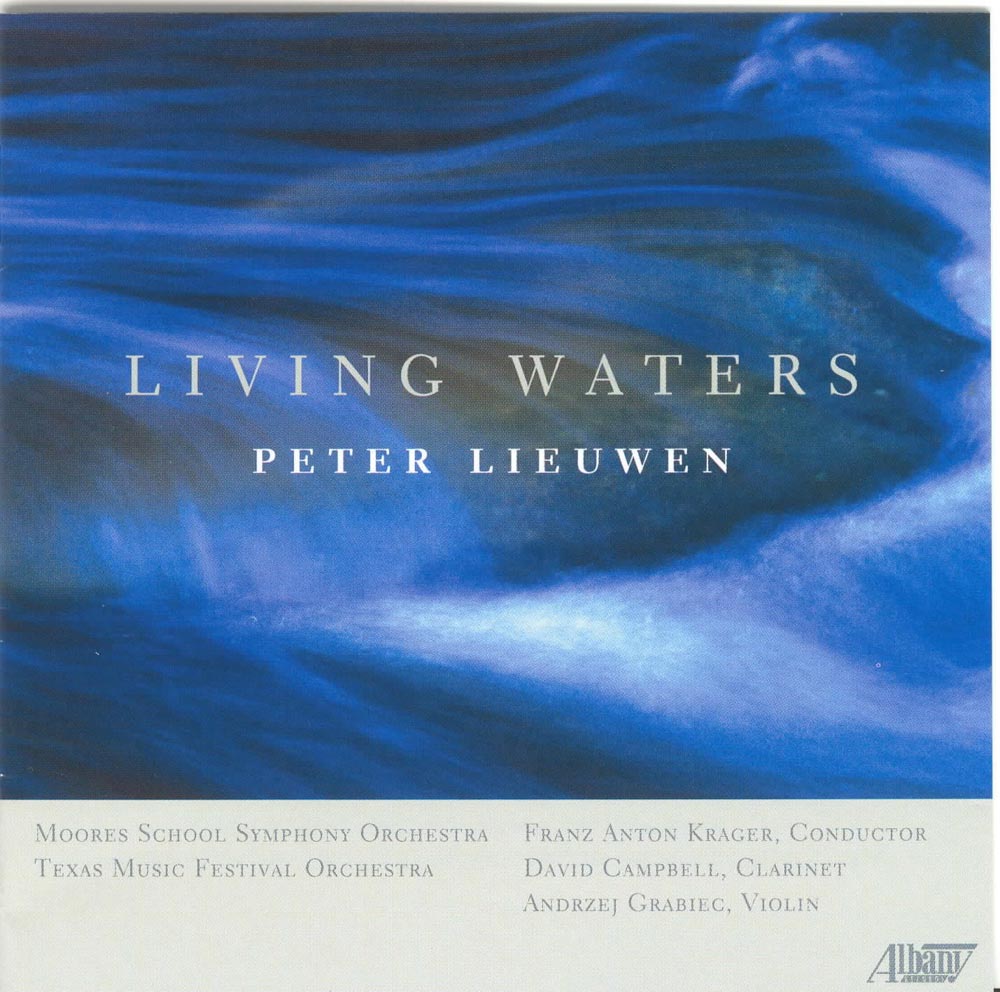Catalog #: TROY0704
Release Date: November 1, 2004OrchestralLeroy Southers was born on July 13, 1941, in Minot, North Dakota, and died November, 2003. The recipient of numerous honors and academic degrees, including a Doctorate of Musical Arts & Composition from the University of Southern California, Leroy W. Southers, Jr. was an extremely accomplished musician. Member of the Composition faculty at the Berklee College of Music in Boston, he also taught in Los Angeles at the University of Southern California and at Loyola Marymount University. His Symphony for Chamber Ensemble was composed in 1967, when the composer was only 26. Lee T. McQuillan, a resident of Middletown, Connecticut, studied music Education at Barrington College in Rhode Island and later received his Bachelor of Music in Composition from the Hartt School of Music. His principal composition studies were with Arnoldo Franchetti. Romanza, subtitled Into Troubled Times (A 9/11 Reflection) was written to remember the great loss experienced by humanity on that momentous day in September, and to honor those who suffered the ultimate loss. Originally from Baltimore, Beth Denisch earned her undergraduate degree in music composition from North Texas State University and the Masters of Music and Doctor of Musical Arts degrees in composition from Boston University where she studied with John Harbison and Bernard Rands. Golden Fanfare was commissioned by The Brockton Symphony Orchestra of Brockton, Massachusetts for their 50th anniversary in 1998 and revised for subsequent performances as recorded here. Jack Jarret is a native of Asheville, North Carolina. His academic credentials include a B.A. from the University of Florida, and M.A. from the Eastman School, a Diploma in conducting from the Berlin Hochschule fur Musik, and a Doctor of Music in Composition from Indiana University. He has studied with Boris Blacher, Bernhard Heiden, and Tibor Kozma. From 1989 to 1999, he was chairman of the Composition Department at the Berklee College of Music. His Symphony No. 1 was composed in 1996. In style, it is closer to the classical romanticism of Tchaikovsky or Shostakovich than that of Strauss or Mahler. It is in four movements.
Catalog #: TROY0706
Release Date: December 1, 2004OrchestralEmma Lou Diemer is a native of Kansas City, Missouri. She received her composition degrees from Yale and Eastman and also studied in Belgium and at Tanglewood. She is professor emeritus at the University of California, Santa Barbara, where she taught from 1971-1991. The Concerto in One Movement for Organ and Chamber Orchestra ("Alaska") was written in May, 1995 for Madeline Schatz and the Arctic Chamber Orchestra, and premiered January, 1996 at the University of Alaska, Fairbanks. The soloist was the composer. Marilyn Mason has had a long association with Leo Sowerby's Classic Concerto for Organ and Strings for she gave the work its European premiere in 1957, and in preparation for this she worked closely with the composer himself. Petr Eben is one of the leading composers of the Czech Republic. He studied at the Prague Academy of Music. In 1955, he took up a teaching post in the History of Music Department at Prague's Charles University. In 1978-79, he was professor of composition at the Royal Northern College of Music Manchester. From 1990, he became professor of composition at the Academy of Performing Arts in Prague and President of the Prague Spring Festival. Of the Organ Concerto No. 2, he writes: "After the first organ concerto, which is more of an extended symphony with a concertante organ part, I wanted this time to write a true concerto for organ and orchestra. One of the problems of an organ concerto is that the organ, unlike all the other solo instruments, has a potential in sound equivalent, or nearly so, to that of the orchestra; in exposing both partners at their full volume, there is a risk of overloading the texture. Therefore, in many cases I have placed both elements on different planes, contrasting them not only in their thematic material, but also in time signature and tempi. Elsewhere, I have divided melody and accompaniment between both partners, so that either the organ or even the orchestra takes the role of a melodic instrument, and the orchestra is often written as a unison voice." William Bolcom dedicated Gospel Preludes, Book IV to Marilyn Mason, who premiered the three hymn-fantasies at the University of Michigan in 1986. The composer writes: This is the last collection of my Gospel Preludes, bringing the total to twelve. Sometimes I Feel Like a Motherless Child was a reaction to the brutal end of Marvin Gaye, whose Motown career went beyond the more or less usual stereotype and whose personal life led to his murder. Sweet Hour of Prayer always has had a febrile intensity for me, and I set it with that mood in mind. The final is a combined fantasy on O Zion Haste and a gospel-influenced 5/4 setting of How Firm a Foundation, which caps the whole series." Bolcom's score stands amidst an impressive pile of 20th century compositions brought to life by the energy and determination of Dr. Mason.
Catalog #: TROY0708
Release Date: December 1, 2004OrchestralAngelo Musolino has been an educator for more than 40 years, both as private instructor and as a college professor at the Brooklyn Conservatory of Music, Empire State College and Adelphi University where he directs the Pop Ensemble for which he still writes music.
Catalog #: TROY0711
Release Date: November 1, 2004OrchestralTim Page has described Five as "...another in a distinguished series of compositions Wuorinen has written for the cellist Fred Sherry. Dating from 1987, it is the most recent piece on this disc and (to employ, reluctantly, what has become an increasingly noxious code word) probably the most "accessible."" Five was commissioned by the New York City Ballet for their 1988 American Music Festival. Fred Sherry writes: "Five is a cellist's showpiece, a dance, a thrill for the audience, and a beautiful example of Wuorinen's versatility and technique." Michael Steinberg writes: "The Golden Dance was commissioned with the cooperation of the San Francisco Symphony by the Meet the Composer Orchestra Residencies program. It was written for Herbert Blomstedt and the San Francisco Symphony on the occasion of the Orchestra's 75th anniversary. It was completed in May, 1986 and was introduced on September 10, of that year. Wuorinen, who likes to make his titles topical and, if possible, punning, has called this piece for San Francisco The Golden Dance. No need to elaborate on the associations called up by the word 'golden' in California. The other meaning is not obvious, and that is the role played in the design by the golden section, that classical division of a line, thought by the Greeks to yield an aesthetically perfect proportional relationship, where the smaller section is to the larger as the larger is to the whole." The Concerto for Amplified Violin and Orchestra was commissioned by the Fromm Music Foundation for Paul Zukofsky, Michael Tilson Thomas and the Boston Symphony Orchestra. It was composed between June 25, 1971 and April 2, 1972 and premiered at Tanglewood on August 4, 1972. The Concerto is in three movements and is marked by a unique relationship between soloist and orchestra; they are on an equal acoustic footing. The amplification of the soloist enables him to compete with the entire orchestra at full volume. The impact is visceral and immediate.
Catalog #: TROY0724
Release Date: January 1, 2005OrchestralPaul Chihara writes: "The three pieces on this CD were written when I was a young composer, I had just resigned my teaching position at UCLA (in 1973), and was just entering the free-lance world of movies, Broadway and ballet. Within six months I found myself working on my first film for Roger Corman (Death Race 2000) and first commissioned ballet score (Shinju, for the San Francisco Ballet). Each of the three works on this CD were revised extensively over the last few years, and recorded and mixed with the latest technology in Hollywood and New York. The Concerto for Guitar and Orchestra with Trumpet Obbligato was written for Pepe Romero and the Los Angeles Chamber Orchestra in 1975. Maestro Neville Marriner was the orchestra's first music director, and he chose me to be his first composer-in-residence. Over the years, we have maintained the warmest artistic relationship. The concerto also reflects my friendship with the great Spanish guitarist Pepe Romero, and our mutual fascination for scary movies with their haunting stories and images of tragic, beautiful women. The concerto evokes the mysterious films from Japan from that period: especially Kuroneko (Black Cat) and Onibaba (Demon Woman). Mistletoe Bride (1978) was my second ballet commissioned by the San Francisco Ballet, which subsequently appointed me to be its first composer-in-residence. Its story (and principal musical theme) is based on the tragic ballad of the same name, attributed to Thomas Haynes Bayly (1797-1839). Despite its title and hallucinogenic orchestral textures, Grass has nothing to do with marijuana. It was composed in 1974 for the great avant-garde bass virtuoso Bertram Turetsky, and commissioned by Giora Bernstein and the Claremont Music Festival. It derives its title from the pastoral lyrics of the 17th century English poet Andrew Marvell: his Mower songs, with their obsession for the mysterious Juliana, and the recurring metaphor of grass as a symbol of life and death."
Catalog #: TROY0729
Release Date: December 1, 2004OrchestralIn an essay in the program booklet called Revelry's Ringmaster Ray Bono writes: "The gift of creating music that is immediately likable, that brings a smile to the listener's face on first gearing, is a gift not bestowed on all composers, not even all the great ones. But in 19th - century Europe such congeniality did shimmer in the works of composers like Offenbach, von Suppe and the Strausses. In 20th -century America, their counterparts included individuals who frequently alternated between the concert hall and the pop-culture domains of Broadway, Hollywood, radio and television - individuals ranging in renown from Gershwin and Bernstein to John Williams, Leroy Anderson, Ferde Grofe and Don Gillis. Donald Eugene Gillis was born in Cameron, Missouri and studied trumpet and trombone in school and by his early teen years was composing dance-band music. His family moved to Texas, where he earned his degrees at Texas Christian University in Fort Worth and North Texas University in Denton. Before moving to Manhattan in 1944 to serve as producer, scriptwriter and commentator for NBC radio programs (including those of the famed NBC Symphony Orchestra under Toscanini), the multitalented young man had already worked as a jazz musician, a band and symphony orchestra organizer, an arranger, a conductor and - for station WBAP in Fort Worth and then NBC in Chicago - a radio production director. Amid all this and while raising a family, he pursued an energetic composing career. His early works already point to Gillis's most memorable characteristic of all: an untrammeled love of the lighthearted, laced with a dislike for pomposity. As he himself put it, speaking of his household's musical preferences: 'We hate stuffed-shirtism in musicians, and phony artistry, and anything but the fact that music is a normal function of people's living. Gillis thrived during his New York decade with NBC. Following the 1954 retirement of his much-admired Toscanini (who called him 'Jeelee'), he went to Michigan where from 1958 to 1961, he was vice-president of the Interlochen Music Camp. He then assumed a succession of academic chairmanships at Southern Methodist University in 1967, the Dallas Baptist College in 1968, and in 1973, the University of South Carolina in Columbia. The composer appears to have been as unaffected and good-humored as the music he wrote. 'I am convinced,' Don Gillis once said about music 'that it is the heart which must speak - and not the brain alone.'" This says everything there is to say about the music on this disc, which will make a perfect gift for the music lover on your list for whom you have no idea what to get for Christmas. This is music which is well crafted and enjoyable. The gifted English pianist and conductor plays this music as if he has lived with it all his life. This is the first time the Symphony No. 4 has ever been performed, let alone recorded. There will be more of Gillis's music appearing in 2005.
Catalog #: TROY0733
Release Date: March 1, 2005OrchestralRobert Ackerman is a rarity among musicians in our day and age: more than a performer who composes or a composer who performs, he transcends musical genres and styles, not only in his compositions, but performs all styles of music on four instruments (flute, clarinet, saxophone and piano). As if this were not enough, Ackerman has made a life of the study of acoustics and instrument design and has shared this information with generations of students not only as a public school music teacher, but also as an international lecturer and published author. His compositions have received Ford Foundation and National Endowment grants; he has performed with Steve Reich and Philip Glass; his big band charts and jazz tunes have found their way into the repertoire of some of the most influential jazz players of his age; and he has performed at most of the important jazz festivals the world over. Robert Ackerman was born in Irvington, New Jersey in 1940. His music studies began in New York City with Joe Soldo (Bell Telephone Hour) and the legendary Joe Allard (Juilliard School of Music) continuing with master teachers such as Thomas Nyfenger (Yale University), Keith Underwood, Eddie Saulkin, Harvey Boatright (Dallas Symphony), and Bob Morris (New York Philharmonic). Ackerman received degrees from Montclair State University and Columbia University in New York. After spending the 1960s in the New York concert music scene, Ackerman left for Europe and entrenched himself in the jazz scenes of Italy, Switzerland, France and Sweden, only to return to the States in 1985. This recording marks the first commercially available representation of his concert music.
Catalog #: TROY0737
Release Date: February 1, 2005OrchestralRay Bono writes in his program notes: "Fiercely independent. Self Reliant. Self-disciplined. Such descriptions invariably surface in accounts of Paul Creston's life. More emphatic is the assertion that, excluding keyboard lessons, he was "entirely self-taught" in music. And, in fact, the short, affable Italian-American was in many ways a supremely self-made man, even down to his name. Born on October 10, 1906 in Manhattan to an impoverished couple from Sicily, he was christened Giuseppe Guttovergi (the family name would later be recast as Guttoveggio). In childhood he was also called Joseph but by 15 had been dubbed Cress by his friends, after Crespino, the role he played in a high-school staging of Goldoni's comedy, The Fan. Before long, he reworked this Cress into a fuller, solidly American-sounding name - and exit Giuseppe-Joseph-Guttovergi-Guttoveggio; enter Paul Creston. He started composing at the age of eight, soon after his parents, recognizing his musical ability, managed to get him a piano and a teacher. Within a few years, he was capable enough to substitute for the teacher when the man was ill - and canny enough to deem the man musically incompetent. He moved on to better piano teachers, took organ lessons too and plunged into a ferocious self-directed study of the works of Bach, Rameau, Scarlatti, Rimsky-Korsakov, Chopin, Debussy and Ravel. These masters of form, harmony and color, he would always maintain, were his true teachers; from them alone did he learn composing and orchestration. From the onset of the Great Depression, when he wasn't trying to sell insurance or real estate, Creston was accompanying singers as a Musicians Emergency Fund member - and pondering a career as a writer. Or a concert pianist. Or a composer. After a favorable response to a set of dances he wrote for solo piano in 1932, and to his incidental music for a theater piece - and encouraged by composer and concert organizer Henry Cowell, he sat down, took stock of his talents and decided to concentrate seriously on composition. His early modest pieces were successful enough to earn him a positive mention in Aaron Copland's 1936 article about "America's young men of merit" (although Copland grouped him with rising composers whose work tended to be "somewhat" abstract"). Larger works followed, and more attention. He received two successive Guggenheim fellowships. And his Symphony No. 1, debuting in 1941, won the New York Music Critics' Circle Award and later took first prize in an international competition in Paris. The three orchestral works on this disc - a symphony, a concerto and what amounts to a musical diptych - are from Creston's finest period. Never before recorded for commercial release, they exemplify his talent for uniting lyricism with propulsiveness to make a considerable emotional impact."
Catalog #: TROY0742
Release Date: March 1, 2005OrchestralThe conductor James Freeman writes: "When a young composer named Gerald Levinson applied for a position in Swarthmore College's Music Department (of which I was then acting chair) more than 20 years ago, I was struck by an extraordinarily luminous, beautifully written piece called in dark which he had included in his portfolio. That piece and several others in the same folder showed so much imagination, feeling for color, and downright compositional skill that I had no doubt this was the composer we were looking for. A heartfelt and passionate letter from Olivier Messiaen only added to my departmental colleagues' and my own conviction that Levinson must be "the real thing." We were counting on the new person to teach the major part of our theory cycle, and young Levinson had absolutely no teaching experience of any kind. Nonetheless, we took a chance and hired him. Anyone who wrote such wonderful music had to be a great teacher and he was. When Orchestra 2001 was founded in 1988, it was the music of George Crumb (which is currently being recorded for Bridge) and Gerald Levinson that I especially wanted to bring to new audiences." The critic Paul Griffiths has written: "What must thrill anyone who comes in contact with Gerald Levinson's music is its sheer joy in sound, and the decisiveness with which it sings or dances its way through time.... In sympathy with sound, in sympathy with time, Levinson's music is close to the natural phenomena on which all music depends. Two things spring from this. One is that his music can easily evoke other natural phenomena: the sea, the stars, rugged landscapes. The other is that this music is in tune with other kinds of music from around the world. Levinson's resources are classical western: he writes for the symphony orchestra, for the piano, and for chamber groupings of conventional instruments. His disciplines, too, are those of the western tradition. But the east was present in his music even before his first trip there. His works, right through his career so far, exist on companionable terms with Mahler's music and with Bali's, with Ravel's and with Japan's, with Messiaen's and with India's, with Stravinsky's and with China's, with America's symphonic tradition and with Tibet's slow melody. Out of all this he is creating, piece by piece, a world of his own."
Catalog #: TROY0743
Release Date: May 1, 2005OrchestralXylem is a short, energetic piece that amplifies a microscopic world, creating perpetual motion punctuated by explosive bursts. It takes its name from the tissue made of long tubular open-ended cells that conducts water from the soil up to the various parts of plants. Orianna Webb currently teaches composition at the Cleveland Institute of Music where she is a founding director of the Young Composers Program. Shulamit Ran writes: "My having been commissioned by the National Flute Association for a flute concerto in celebration of that organization's year 2000 convention was, for me, a much-relished opportunity to further explore the direction I found myself pursuing in earlier works." The work was premiered on August 19, 2000, with Patricia Spencer, flutist, and Ransom Wilson, conductor. Samuel Adler writes: "Nostalgia plays a role in the creation of many works of art. This was certainly the case in my writing this particular orchestral work that was composed for the Texas Little Symphony and John Giordano in the summer of 1982. For a long time now, I have had a love affair with Texas and also with music of the rather distant past. The resulting work was one which I had wanted to do for many years, namely, a dance suite based on Medieval, Renaissance and Baroque themes. These dances are treated as recompositions rather than arrangements. While the actual tunes in most of them are from a bygone era, the compositional techniques employed are of the 20th century and result in a metamorphosis of the old material. In other words, it is as if a contemporary composer took a journey into the past, fell in love with seven dance forms, brought them back to our century and rewrote them for he felt they still give off the same charm, excitement and contemporaneousness which they did when they were originally conceived." Chen Yi is currently the Cravens/Millsap/Missouri Distinguished Professor at the University of Missouri-Kansas City. She received her bachelor's and master's degrees in music composition from the Central Conservatory in Beijing, and a doctorate from Columbia University. Her composition teachers include Chou, Davidovsky, Wu and Goehr. She has served as composer-in-residence for the Women's Philharmonic, the vocal ensemble Chanticleer and the Aptos Creative Arts Center (1993-1996) supported by Meet the Composer. Kevin Puts's Inspiring Beethoven was commissioned by the Phoenix Symphony, Hermann Michael, conductor, for their Beethoven Festival in January 2002. The work is a musical tale of Beethoven transcending the grim realities of his life and finding the inspiration to compose the joyous first movement of his Symphony No. 7. Puts has received degrees from the Eastman and Yale University Schools of Music, and currently serves as assistant professor of composition at the University of Texas at Austin.
Catalog #: TROY0768
Release Date: June 1, 2005OrchestralFirst: have you noticed how certain works, musical or visual, have an uncanny knack for perfectly evoking the period when they were created? That's one of the distinguishing features of the wonderful music on this new disc. The Symphony No. 6 sounds exactly like the late 1940's, much the same way that classic post-war movies conjure that period. In fact, the Symphony No.6 might be the most cinematic of all of Gillis' works in that form, with a wonderful sense of tension in the first movement that would be right at home on the soundtrack of The Big Sleep or This Gun for Hire. The second movement is full of excitement, like a modern analog to the scherzo of the Mendelssohn Scotch Symphony. The bluesiness of the third movement recalls Gershwin at his most relaxed, and the boisterous final movement with its cushy harmonies proves that Gillis had a lot in common with the great Broadway and Hollywood arrangers. The Symphony No.5 is probably the most "serious" of his symphonic output, reflecting the mood of the immediate postwar era. This contains one of his most beautiful slow movements (and if you're an ongoing fan of this series, you know how effective his quiet moments are); the keening sense of nostalgia often bears a striking resemblance to Bernard Herrmann (think in terms of his scores for The Devil and Daniel Webster or The Ghost and Mrs. Muir). The strictly "fun" piece of the collection is the Paul Bunyan Overture, full of rollicking spirits but, again, with a more contemplative sound. All of this is performed with the greatest enthusiasm and color by the Sinfonia Varsovia and Ian Hobson. An absolute must!
Catalog #: TROY0771-72
Release Date: July 1, 2005OrchestralChances are, a long time ago, the first American composer you encountered outside the mainstream (i.e., Copland, Harris) was Vincent Persichetti, and you might still own that old Columbia LP of his Symphony No. 4 with Ormandy and the Philadelphia Orchestra. Here was music that was fresh, delightfully rhythmic, with a distinctive harmonic and instrumental sound that you could always recognize later on (especially if you picked up that wonderful Fennell LP of the Symphony for Band a few years later). There was always something concise about his music, not a note that didn't belong, and this was music that was really exciting to listen to. No one really wrote for brass the way he did. We are very happy indeed to present this new recording of the Symphony No. 4 along with world premiere performances of the post-war Symphony No. 3 and the religiously-inspired Symphony No. 7. Interestingly, Persichetti is in the august company of Peter Mennin and William Schuman in withdrawing his first two symphonies; much of the 3rd makes a grand statement, and careful listeners might actually find similarities between the final moments of both the Persichetti and Schuman's own Symphony No. 3. The Symphony No. 7, in multi-part single-movement form (like his Symphony (No. 5) for Strings) shows a great variety of emotions and colors, and reflects his own private sense of spirituality. As with his ongoing series of American music for Albany, David Alan Miller and the Albany Symphony give exciting, authoritative performances. This will prove a great discovery for people new to Persichetti's music, and this will be a must for those veteran fans waiting a long time to hear more of his music.
Catalog #: TROY0774-75
Release Date: August 1, 2005OrchestralBorn in 1943, David Maslanka studied composition at Oberlin and received his graduate degrees from Michigan State University where his teacher and mentor was H. Owen Reed. He has served on the faculties of the State University of New York at Geneseo, Sarah Lawrence College, and Kingsborough Community College of the City University of New York. He now lives in Missoula, Montana. Maslanka has written nearly 30 major works for wind ensemble, among them five symphonies, nine concertos, a Mass, and a large variety of concert pieces. Four of the five works on this recording are world premier recordings, the one exception being Symphony No. 4, which appears on another Albany Records recording (TROY503). The Concerto for Piano, Winds and Percussion (1974-76) was Maslanka's first work for wind ensemble. The work received its premiere three years later by the Eastman Wind Ensemble conducted by Frederick Fennell. According to Maslanka, "That fine first performance opened the door to my long and happy career of writing for winds." Concerto No. 2 for Piano, Winds, and Percussion is in five movements - each one songlike with a programmatic backdrop. Maslanka says of Testament: "A testament is a statement of belief, in this case in the power of music to harmonize and to heal. Testament was written in response to the events of September 11. Out of the initial stunned confusion has come my firm conviction that making music is now more important than ever." Traveler was written in 2003 to commemorate the career of Ray Lichtenwalter, the Director of Bands at the University of Texas at Arlington. It is based on the chorale melody Nicht so traurig, nicht so sehr ("Not so sad, not so much.") According to Maslanka, "The roots of Symphony No. 4 are many. The central driving force is the spontaneous rise of the impulse to shout for the joy of life..." Albany Records is proud to continue its commitment to the extraordinary music of David Maslanka. Our catalog now boasts 17 recordings of his works. For the complete listing go to www.albanyrecords.com.
Catalog #: TROY0782
Release Date: August 1, 2005OrchestralIn his third recording for Albany Records, the spectacular horn player, Eric Ruske, presents a program of concertos for French horn written by the Romantic composers Reinhold GliFre, Franz Strauss and Richard Strauss. According to Ruske, "...the Romantic era of musical composition ushered in a golden period for the horn as a solo instrument.... With the chromatic possibilities and technical advances that were made possible by the addition of valves in the early 19th century, the horn made its resurgence as a solo vehicle." Eric Ruske has established himself as an artist of international acclaim. Named Associate Principal horn of The Cleveland Orchestra at the age of 20, he also toured and recorded extensively during his six-year tenure as hornist of the Empire Brass Quintet. His impressive solo career began when he won the 1986 Young Concert Artists International Auditions, First Prize in the 1987 American Horn Competition, and in 1988, the highest prize in the Concours International d'InterprTtation Musicale in Reims, France. His discography includes solo recordings for Telarc, Musical Heritage Society, Fleur de Son, and Albany Records. An Associate Professor and member of the faculty of Boston University since 1990, Mr. Ruske also directs the Horn Seminar at the Boston University Tanglewood Institute.
Catalog #: TROY0796
Release Date: October 1, 2005OrchestralPraised by the New York Times as a "young composer of great gifts," Larry Alan Smith has developed an international reputation as a composer, performer, educator and arts executive. He pursued his musical studies with Nadia Boulanger in France and at the Juilliard School with Vincent Persichetti. From 1980 to 1986 he also taught at Juilliard; previously he was on the composition faculty of the Boston Conservatory. It's always a pleasure to welcome a new name to the catalog, especially when this release features significant orchestral works: the Three Movements, full of drama and virtuoso writing; the introspective Crucifixus, the Symphony No.2 with its program describing the relationship of man and the world (with a depiction of the Civil War battle at Antietam, West Virginia) and the charming Serenade, a wedding present to his wife Marguerita. This is an exceptional way to make your acquaintance with an important American composer.
Catalog #: TROY0798
Release Date: November 1, 2005OrchestralThis is one high-class kid's record! Actually, the subtitle is Ballets for Children of All Ages, and both scores take an off-beat spin on two familiar storylines (somehow, the Red Sox get involved with Cinderella's family). Bernard Hoffer, born in Switzerland, studied at Eastman with Louis Mennini, Wayne Barlow and Bernard Rogers. Even if you've never heard of him, you've heard his music for his specialty over the years has been commercial music for such clients as McDonald's, Ford, and Chevrolet. He was nominated for an Emmy for his theme for the MacNeil/Lehrer News Hour on PBS. For the past fifteen years he has devoted his time to concert works. These two delightful scores (featuring small instrumental ensembles) are performed by none other than famed new music specialists Boston Musica Viva and Richard Pittman and the one-and-only Bob McGrath, who has just celebrated his 35th year on Sesame Street.
Catalog #: TROY0799
Release Date: December 1, 2005OrchestralAs we pointed out in our previous release of Wallace's orchestral music (TROY557), he is no relation to the Scottish composer of the same name who lived from 1860-1940. He is definitely a modern composer with roots in traditional Romanticism but with contemporary elements that give his music a fresh sound. His principal teachers were Utah's Leroy Robertson, Egon Wellesz and Edmund Rubbra. The last is the composer Wallace most resembles; the Concerto Variations is a work of grand stature, similar in scope to the British master's earlier Symphonies. In contrast is the delightful Second Dance Suite and Cantilena, which reveal Wallace's affinity for Baroque forms. The Viola Concerto is a concise, lightly-scored work which certainly makes a welcome contribution to the still-small repertoire of modern works for the instrument. This will have great appeal for listeners who enjoy neo-Romantic music.
Catalog #: TROY0818
Release Date: February 1, 2006OrchestralIf you're of a "certain age," you grew up in the late '50s and early '60s hearing the music of Angelo Musolino without even knowing his name. He was responsible for original music and arrangements for the Ed Sullivan Show, a dozen nationally televised game shows, the Children's Television Workshop, and many more. At the same time, his concert works were being performed in the United States and Europe. He was born in New York City, learned his craft in "formal" institutions during the day while playing with such names as Dizzy Gillespie, Johnny Mandel and Oscar Pettiford at night. He carries on the traditions of Copland, Bernstein, and Henry Mancini and Nelson Riddle, writing in a style that freely combines pop elements with a traditional orchestral scoring. This new disc, a companion to his earlier CD Opening Doors (TROY708), reveals a master of light musical forms. You may not know his name now, but you will definitely remember it after hearing this delightful disc.
Catalog #: TROY0821
Release Date: April 1, 2006OrchestralBy now the Illinois State University Wind Symphony under Stephen Steele has achieved renown for their adventuresome Albany recordings (TROY500, TROY600, TROY755 and TROY774-775). One of the composers prominently featured in these releases is David Maslanka, who, after Vincent Persichetti, is probably the most important American composer for band. His Symphonies 4 and 5 are featured in this series, and the Symphony No. 7, as Maslanka explains, is a Symphony of old songs remembered: "I am strongly affected by American folk songs and hymn tunes. With one exception all the tunes are original, but they all feel very familiar. The borrowed melody is from the 371 Four-Part Chorales by J.S. Bach. Each song has a bright side and a dark side, a surface and the dream underneath." Samuel Zyman, a long-time Juilliard faculty member, is one of the most prominent Mexican composers. His Cycles is a one-movement work that consists of several distinct sections that appear and alternate "cyclically" throughout the work. Matthew Halper's works are widely performed and his Flute Concerto is an expansive, dramatic work that covers a wide musical terrain in a single movement.
Catalog #: TROY0822
Release Date: February 1, 2006OrchestralOver the past few years the highly charged, exuberant music of Florencio Asenjo has been slowly appearing on CD, and this is his debut on Albany. Asenjo employs an approach to music called maximalism, a method of transition from one theme to another to achieve a highly dense content which is constantly changing. Perhaps the technique sounds experimental, but the music certainly is not avant-garde. The Buenos-Aires born composer is beholden to his country's colorful past, and anyone who enjoys the early works (such as Estancia or Panambi) of Alberto Ginastera will certainly be caught up in the excitement of Asenjo's music. All three works on this disc were composed in 2004, and represent colorful portraits of life (Tearings and Glimpses) as well as various psychological states of mind (Passion and Apotheosis). As Asenjo himself has written, "I like when large-scale forms are built on many ideas. There should be a lot of independent ideas. I think that now the general need is for more substance in music."
Catalog #: TROY0833
Release Date: April 1, 2006OrchestralThis release of Don Gillis' music is especially important because it contains three of his most beloved works in their first commercial re-recordings since the classic 1950 LP's conducted by the composer. All of these works have that wonderfully bracing, great-outdoors sound that fans of Gillis thrill to. The common theme of the Old West runs through the entire program. Each of these works abounds in the terrific melodies, spicy harmonies and a strong narrative drive, which are all the musical fingerprints of this fine American composer. As in past releases, Ian Hobson and the Sinfonia Varsovia show a great affection for this music. If anything, Maestro Hobson matches Gillis' own energetic performances and even finds a bit more emotional gravity in The Alamo. On top of this is the excellent SACD surround sound that really brings out the orchestral colors hidden in these scores.
Catalog #: TROY0835
Release Date: May 1, 2006OrchestralWe've been proud over the past several years to offer the chamber and orchestral music of James Yannatos on Albany Records, and this newest release offers an excellent sampling of his talents. Born and educated in New York City, he studied with Philip Bezanson, Nadia Boulanger, Luigi Dallapiccola, Darius Milhaud and Paul Hindemith. He also studied conducting with William Steinberg and Leonard Bernstein, and has been music director of the Harvard-Radcliffe Orchestra since 1964. The Violin Concerto was commissioned by the Pierian Foundation in honor of his 40th year at Harvard. The Symphony, loosely based on a twelve-tone theme, was influenced, as Yannatos says, "by the ragged, edgy rhythms of jazz filtered through the ears of a classical composer." The Contrabass Concerto is described as "a cross between the classical solo concerto, with its typical virtuoso technique, and the alternating 'ritornello' style of the Baroque solo concerto." Yannatos' music is exciting and colorful with a particularly "transparent" sound to the orchestration. The other releases of his chamber, choral and orchestral works can be heard on TROY241, 278, 366, 400, 516 and 638.
Catalog #: TROY0843
Release Date: June 1, 2006OrchestralThis is volume 12 of the ongoing series Paul Freeman Introduces... where one of today's most innovative conductors presents exciting and fascinating new music for orchestra. Throughout this series he has presented several works by the outstanding African-American composer David Nathaniel Baker (a previous all-Baker disc is on TROY377). A native of Indianapolis, Baker holds the position of Distinguished Professor of Music and Chairman of the Jazz Department at the Indiana University School of Music. Among his teachers have been J.J. Johnson, Bobby Brookmeyer, Janos Starker, William Russo, Bernard Heiden and Gunther Schuller. Not surprising, Baker is equally at home in both classical and jazz performing and composing. He is highly prolific, with more than 2000 works to his credits and over 500 commissions from renowned individuals and ensembles. Kosbro (an acronym for "Keep on Steppin,' Brothers") is a perfect example of his style: propulsive, jazzy, rich in harmony and hard-hitting. His music can also be highly lyrical and memorably melodic, as in the "third-stream" Alto Saxophone Concerto. This is truly dynamic American music.
Catalog #: TROY0844
Release Date: June 1, 2006OrchestralIn this third release with the Dvorak Orchestra (the previous discs are TROY687 and TROY704), Julius Williams again displays his enthusiastic and original approach to American orchestral works. Composer/conductor Williams has been Music Director of the Washington Symphony Orchestra and has conducted orchestras and ensembles all over the United States. He has held faculty positions at Wesleyan University, the University of Hartford and the University of Vermont. He has received multiple ASCAP awards in composition over the years. As a native New Yorker, his memorial piece to the September 11, 2001 tragedy is obviously heartfelt, with a suggestion of optimism. McQuillan, a native of Amsterdam, New York, reveals strong lyrical gifts in Seasons of Gold. Brooklyn-born Qualliotine paints an expressive picture of the changing seasons around his Massachusetts home in Mystic Valley Autumn, and Berklee School of Music teacher Hojnacki reveals a strong narrative drive in his neo-Romantic Symphony No. 1. This disc is a perfect demonstration of the diversity that exists in modern American music.
Catalog #: TROY0845
Release Date: June 1, 2006OrchestralA previous release on Albany TROY381 of vocal/orchestral works by Phoenix-born Robert Nelson revealed a composer with a rich, romantic style that could be compared to that of Howard Hanson or Samuel Barber. A pupil of Ingolf Dahl and Halsey Stevens, Nelson here reveals another side to his personality. Up South, suggested by both Krager and Marmolejo of the Moores School, reveals Nelson's affinity for both classical and jazz. The work is a veritable history of jazz, with each movement reflecting, respectively, the roots of jazz in the spirituals of the Old South, the Harlem Renaissance of the 1930s, and the emergence of jazz-fusion in the 1960s. The jazz spirit also imbues the duo-piano piece Impressions/Expressions. A more overtly pop sound runs through the arrangements for voice and orchestra of Creole Songs, and the final work, Shadows and Music, applies the story of the famed acting sisters Dorothy and Lillian Gish to the changes music went through during their heydays. This is a highly revealing look at a composer who came of age during the 1960s and 1970s.
Catalog #: TROY0858
Release Date: July 1, 2006OrchestralThe art-music composer of today faces many challenges. On the one hand, one is tempted to create music that embraces a diversity of styles. On the other hand, one hopes to develop a personal language that would reflect one's artistic orientation and at the same time communicate effectively with the audience. This issue is of particular relevance to composers who grew up in non-Western cultures. Their music, to some extent, manifests their struggle to mediate between Western music and music of their own culture. Shih-Hui Chen is one example. Having grown up in Taiwan and having her basic musical training there, her works have been influenced by traditional Chinese as well as Western concert music. Over the years Chen has become adept in the compositional language of Western music. She earned a doctoral degree from Boston University while continuing her education in the United States. A prolific composer, she has written for a wide range of genres, including solo, chamber, orchestral and film music. The five works featured on this CD cover a broad span of time (1999-2003), and reflect a developing aesthetic. This music summarizes Chen's development and comes out of a desire to create works that assimilate her Chinese heritage and her training in Western art music. Like the interaction between yin and yang, these two opposing yet complementary forces continue to shape Chen's aesthetic and her music, resulting in music that explores the representation of "Chineseness" within predominantly Western compositional frameworks.
Catalog #: TROY0859
Release Date: August 1, 2006OrchestralHere is another remarkable release in our ongoing survey of the music of David Maslanka, a composer best-known for his output for wind ensemble, including his 2nd, 3rd, 4th, 5th and 7th Symphonies and major concertante works, most of which can be found on the Albany label. This recording presents a less-familiar side of the composer: music for symphony orchestra. Of these works, Maslanka has written, "My first diary entries on 11:11 are from 1998. It was then that I began noticing the time 11:11 on digital clocks. For no apparent reason, and far more often than might be coincidence, my eye would be drawn to a clock and it would read 11:11. At first I thought it was amusing, and then it became a bit spooky, as if something were trying to get my attention. I began to meditate on 11:11 and received images of impending crisis, and even disaster. Then I decided to write a piece out of those feelings. Surprisingly when the music did finally come out it was not in crisis mode. It is for the most part filled with a bright and hopeful spirit, a "new dance at the edge of the world"...I now believe that the earth is a living thing, and that humans are one part of its consciousness. I have been aware of a powerful "voice of the earth" for many years, and especially in my adopted western Montana...One of my life axioms is that there is no progress without crisis, and there is crisis to go through before we come to a right relationship with the planet. The new Symphony is the expression of hope for that right relationship."
Catalog #: TROY0868
Release Date: September 1, 2006OrchestralThe versatile and enterprising Paul Freeman, Julia Bentley, Mary Jane Johnson and Louise Toppin here introduce four works for soprano voice and orchestra, pieces which are thoroughly modern yet continue the grand tradition of the concert aria. Robert Lombardo received his master’s degree in composition from the Hartt School of Music. Aria Variata was commissioned by the Chicago String Ensemble and its director, Alan Heatherington. A native of Texas, James Gardner studied under Anshel Brusilow and Peter Herman Adler. Scene for a Diva expressly pays homage to the kind of concert aria composed by Mozart, written as if it were an actual opera aria, complete with dramatic recitativo and cantabile sections. David Baker is Distinguished Professor of Music and Chairman of the Jazz Department at the Indiana University School of Music. Witness was commissioned by Philip Brunelle for the Plymouth Music Series of Minnesota’s 1990-1991 season. They represent the composer’s reverent treatment of heartfelt and timeless spiritual texts. Another distinguished African-American composer, Hale Smith grew up performing both classical and jazz music. He chose these particular Four Negro Spirituals because he was deeply moved by the zeal of the songs. As an outstanding composer and arranger he has captured the essence of these songs with his brilliant orchestration.
Catalog #: TROY0876
Release Date: October 1, 2006OrchestralTibor Serly will always be associated with Bela Bartok. It was Serly, after all, who gets credit for completing the older composer's Piano Concerto No. 3 and virtually composing the Viola Concerto based on Bartok's outlines and editorial decisions. But Serly, who was born in Hungary and died in London, was a composer of intriguing talent, an excellent violist, violinist and conductor, a musical theorist and was sought-out by students as a teacher. A pupil of Zoltan Kodaly, Leo Weiner and Jeno Hubay, he would eventually play as both violist and violinist in the Cincinnati Symphony under Reiner, the Philadelphia Orchestra under Stokowski and later in the NBC Symphony under Toscanini. His music is in the robust, harmonically spiky tradition we associate with 20th Hungarian composers. Of particular interest is the Concertino 3X3 (pronounced "3 times 3"). As the composer explained: "Concertino 3X3 is at once a Concertino for Solo Piano in three movements; it is also a Concertino for Orchestra, alone; but when played together simultaneously, it is converted into a Concertino for Solo Piano and Orchestra. Thus, in actual performance, one hears three different compositions." This is all fascinating, vital music, and this new release from the enterprising Paul Freeman will allow everyone to appreciate the freshness of Tibor Serly's voice.
Catalog #: TROY0888
Release Date: November 1, 2006OrchestralThroughout his composing career Don Gillis's avowed goal was "to reach the people." And for him the surest way to do that was with "melodies that they could sing and tunes that even kids could whistle in Waxahachie or Dubuque." Born in rural Missouri, Gillis hailed from the same heartland as Virgil Thomson and Roy Harris. While still a teenager, he moved with his Depression-wracked family to Texas and it is with that iconic prairie land of cowboys and oilmen that he and his music are most often associated, thanks to works like Portrait of a Frontier Town, The Alamo and the ballet Shindig. A graduate of Texas Christian University and the North Texas State Teachers College, he pursued music with a vengeance, conducting, performing, arranging, instructing and cobbling ensembles together. Although the highlight of his professional career was producer of Arturo Toscanini's NBC broadcasts for ten years, he labored zealously at the great constant of his life, composing, with the three aspects of his personal credo - love of country, love of God, love of a good laugh - shining through piece after piece in his large output of works. This is especially true of his Symphonies. And it rings out loud and clear in the three comprising this CD - Symphonies 1 and 2, never commercially recorded before, and that bubble burst of orchestral mirth, Symphony No. 5 1/2, his best-known composition.
Catalog #: TROY0898
Release Date: February 1, 2007OrchestralBorn in Perth Amboy, New Jersey, Raymond Wojcik is a composer, conductor and educator. A graduate of the Manhattan School of Music and the Lamont School of Music at the University of Denver, his composition teachers were David Schiff and Donald Keats. His conducting studies were with George Manahan, Michael Charry and Harold Farberman. His music is emotionally direct and spontaneous, with elements of jazz in the Dance Symphony and a keen understanding of the creativity of young children in The Art Spirit, in which the composer was given the task of creating symphonic movements in response to students' artwork. Akin to Fire reflects a musical kinship the composer felt to Beethoven's Grosse Fugue, Op. 133 which he reexamined while in the middle of writing the work. But his comments about Jubilee, commissioned by the New Jersey Youth Symphony, best sum up his aesthetic: "My inspiration for this overture came from the young musicians themselves who possessed a wonderful level of energy, dedication, and love of music. I also could not help but notice a "love" of cell phones, video games and chatting when not engrossed in music making. As a result, I incorporated musical ideas that suggest those things into the compositional fabric."
Catalog #: TROY0928
Release Date: June 1, 2007OrchestralThe music of the outstanding American composer Peter Lieuwen has been described by The New York Times as "an attractive array of shimmering, shuddering sonorities." This recording explores 20 years of music-making in four different genres: large orchestra, small ensemble, solo concerto and chamber concerto.
Catalog

©2024 Albany Records. All rights reserved. | Privacy Policy | Website by PARMA Creative.
